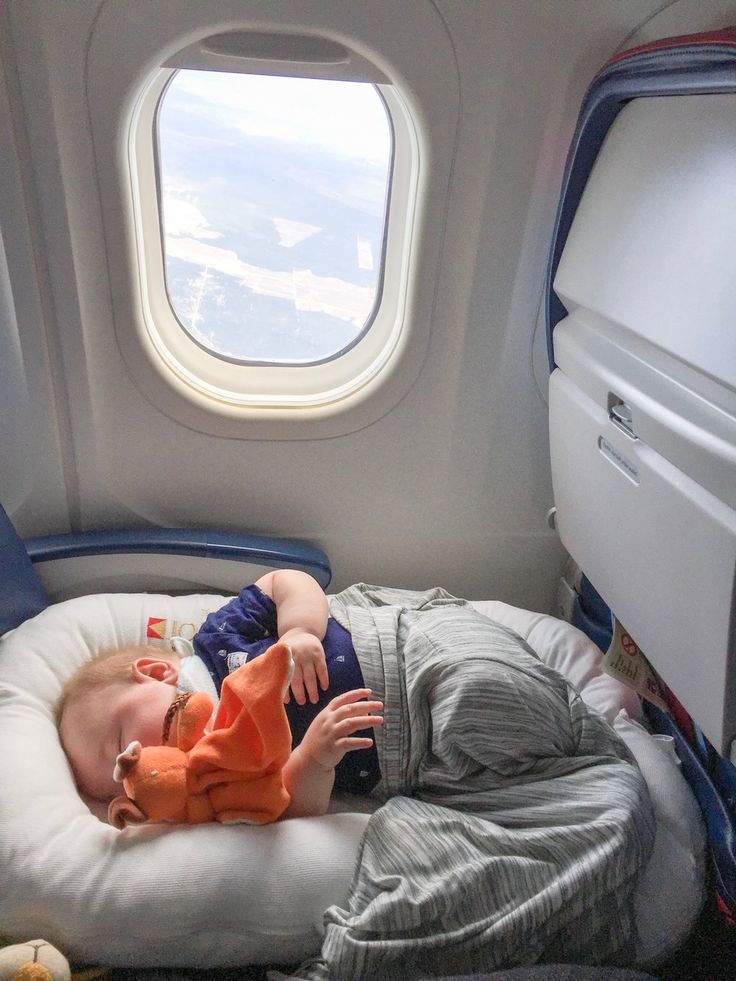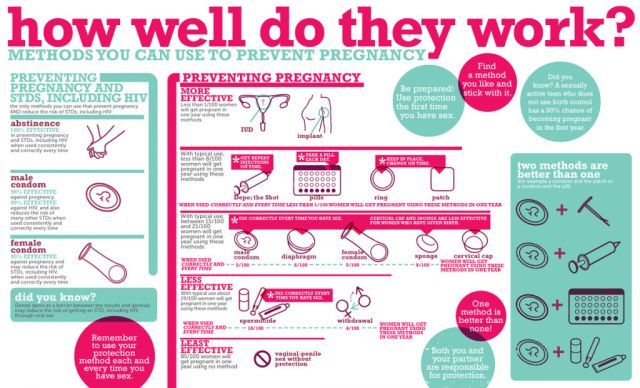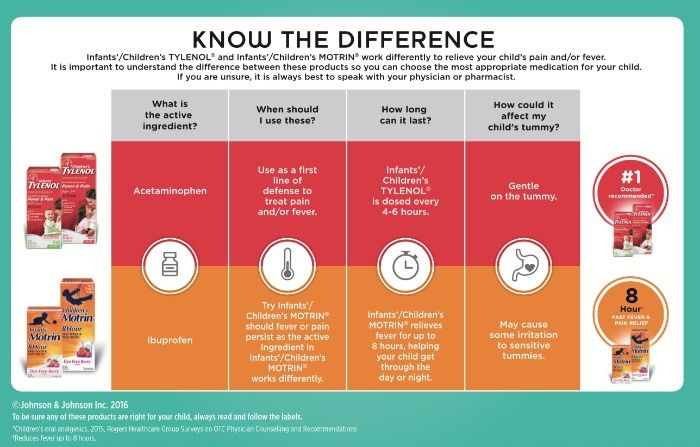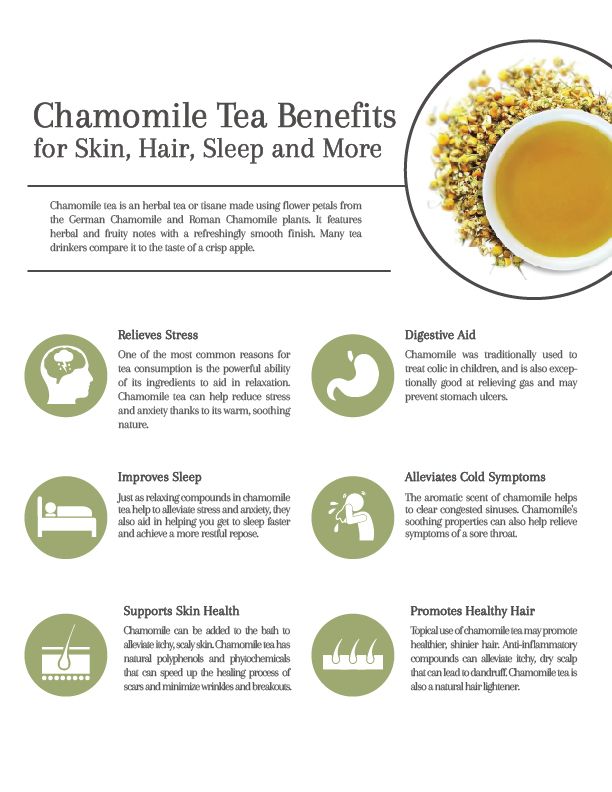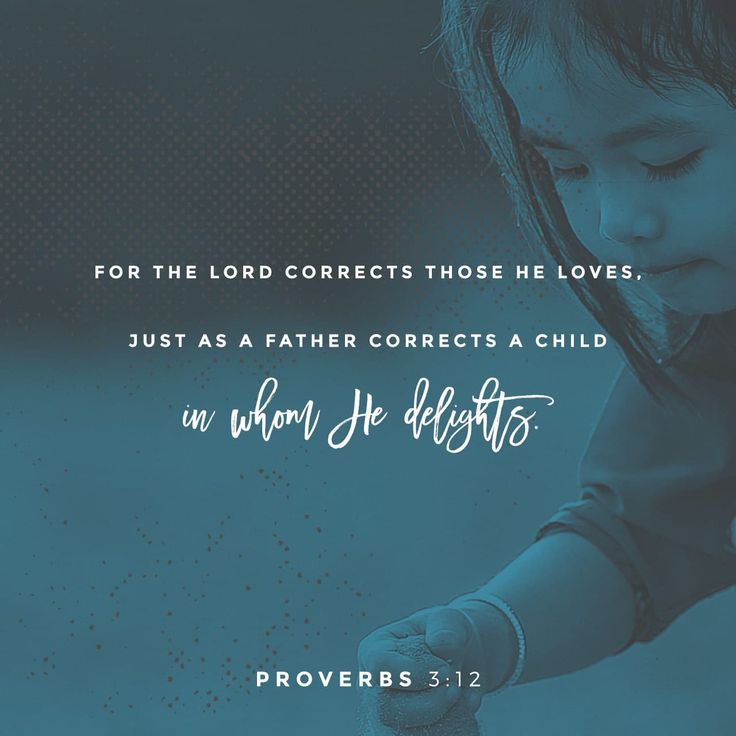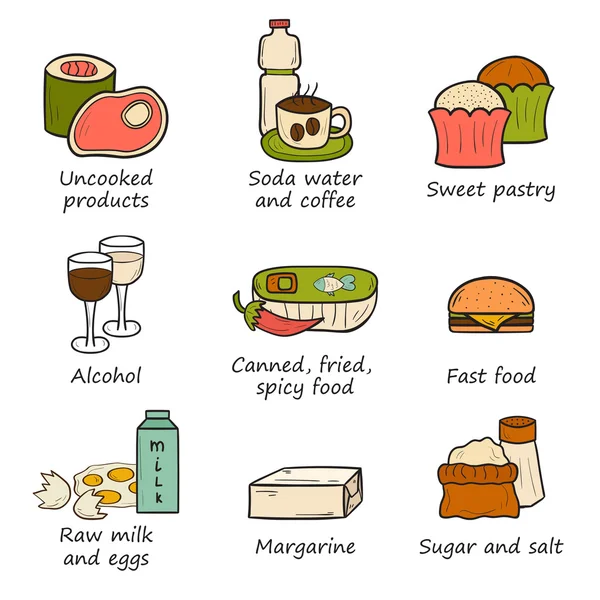Airplane travel with babies
Flying with Baby: Parent FAQs
By: Claire McCarthy, MD, FAAP
Taking a baby on a plane is something that most parents approach with trepidation—with good reason.
Babies and air travel can both be unpredictable, and they don't always mix well. But some advanced planning and preparation can help make for a better experience for your baby, for you, and for everyone else on the plane.
When is my baby old enough to fly on an airplane?
Generally, it is discouraged for babies to fly unnecessarily shortly after birth. Air travel increases a newborn's risk of catching an infectious disease. Babies born prematurely, with chronic heart or lung problems, or with upper or lower respiratory symptoms may also have problems with the change in oxygen level within the air cabin. Parents should talk with their child's pediatrician before flying.
If there is a measles outbreak in your area, or you plan on traveling somewhere where there is a measles outbreak, your pediatrician may recommend your baby receive an extra dose of the MMR vaccine. This may be given as early as 6 months of age.
Learn more here.
Does my baby need a passport for international travel?
Yes. All U.S. citizens, including infants, need a current passport to travel internationally. Parents or guardians need to apply with their baby in person using the form DS-11. Be sure to bring your baby's birth certificate and a photo taken within the last 6 months. Passport photos must be taken with nobody else in the photo, which can be tricky with infants. To do this safely if your baby can't sit up yet, the U.S. Department of State recommends laying your baby on her back on a white blanket or sheet to ensure head support without having to hold her. Another option is covering a car seat with a plain white sheet and taking a picture of your child while she sits in it.
Should my baby sit on my lap during the flight?
Ideally, no. The FAA doesn't require a ticket for children under the age of 2 years, but that means your baby will be on your lap. If there is turbulence, or worse, you may not be able to protect your baby in your arms. If you do not buy a ticket for your child, ask if your airline will allow you to use an empty seat. If your airline's policy allows this, avoid the busiest days and times to increase the likelihood of finding an empty seat next to you.
If there is turbulence, or worse, you may not be able to protect your baby in your arms. If you do not buy a ticket for your child, ask if your airline will allow you to use an empty seat. If your airline's policy allows this, avoid the busiest days and times to increase the likelihood of finding an empty seat next to you.
Should I bring our car seat on the plane with us? Does that count as luggage?
Car seats, booster seats, and strollers generally don't count as luggage, but policies vary by airline; check with yours before flying. In most cases they can be checked at the gate, where the risk of damage is lower, at no cost. If your baby has his or her own airplane seat, bring your car seat with you.
Which seat on the plane is best for a baby?
Look for rows on the plane with more space, like the bulkhead. Exit rows are out, for safety reasons.
Choose a seat closer to the window, if possible.
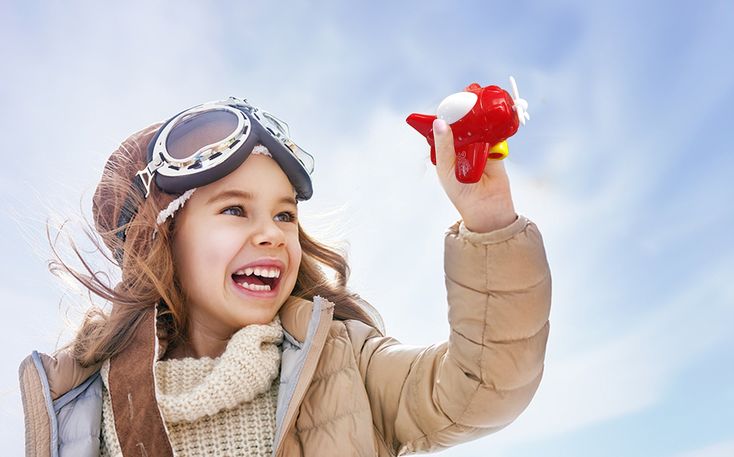 Aisle seats can be risky for babies during beverage service. Hot drinks being passed to passengers can spill and cause
burns, and their little arms and legs can be caught by passing carts. Aisle seats are also closer to falling overhead bin items.
Aisle seats can be risky for babies during beverage service. Hot drinks being passed to passengers can spill and cause
burns, and their little arms and legs can be caught by passing carts. Aisle seats are also closer to falling overhead bin items.
Is there a way my baby can lie down flat on long flights?
Buckling your baby into a car seat or safety restraint remains the safest option. However, there are other options available to help baby sleep comfortably, especially on long-haul flights.
Airline bassinets. Some airlines offer airline bassinets attached to the airplane bulkhead wall―the wall behind the galley, or toilets or another cabin. In some premium cabins, they can be built into the seat compartment.to use in bulkhead rows. Most airline bassinets require the baby to be under 6 months old and/or 20 pounds, and not yet able to sit up unassisted. These bassinets are sometimes referred to as "skycots," baskets, and cots.
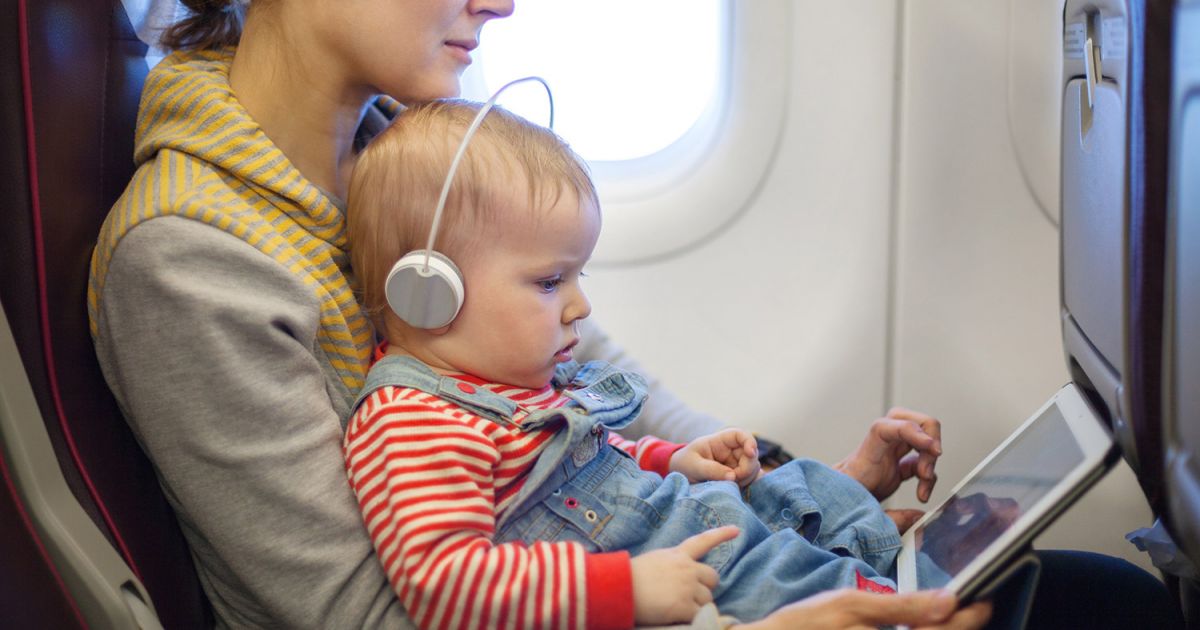 Check with your airline when booking.
Check with your airline when booking. Sleeper seat. For an added fee, some international airlines let you book three seats in a row with locking seat extensions, creating a "sky couch" or sleeper-seat big enough for both parent and child.
Inflatable seat extensions. Some airlines let you bring your own inflatable, individual seat extension for your baby to snooze on lying down. These are fairly new products, and not all airlines permit them to be used, so check ahead of time. Your child will need his or her own seat to use one.
Note: For all options above, your baby would still need to be buckled into a car seat or held on your lap during takeoff, turbulence, and landing.
Will I be able to get liquid formula or expressed breast milk through security?
Yes, but you have to follow the reasonable quantities rules.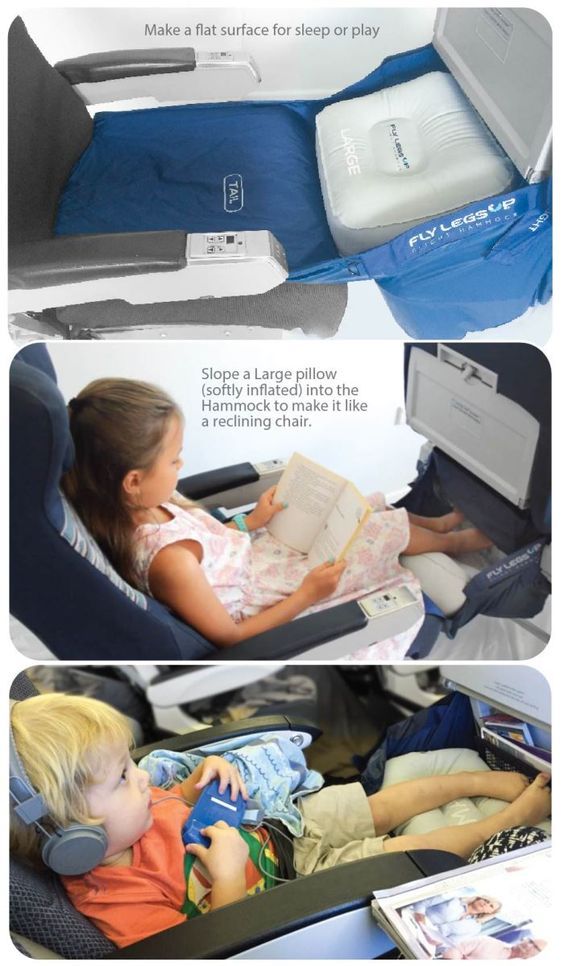 This means you're exempt from the 3-1-1 rule limiting liquids to 3.4 ounces.
This means you're exempt from the 3-1-1 rule limiting liquids to 3.4 ounces.
Pack formula, expressed breastmilk, or water for mixing with powder separately and be ready to let the TSA know you have it. You may ask that they not go through the x-ray machine (although this shouldn't cause a health problem). Visit the TSA website for more information.
Any tips for keeping my baby comfortable and content on the plane?
Dress in layers. The temperature in a plane can vary widely, especially if you are stuck waiting on a runway, so layers of clothing are best. As you pick out clothing, choose outfits that make diaper changing in a small space easier. Also, pack a change of clothes or two, in case turbulence hits during a diaper change or when you are feeding. Bring plastic bags for soiled clothing.
Be ready for ear pain. During the climb after takeoff and descent before landing, changes in pressure between the outer ear and middle ear can cause discomfort.
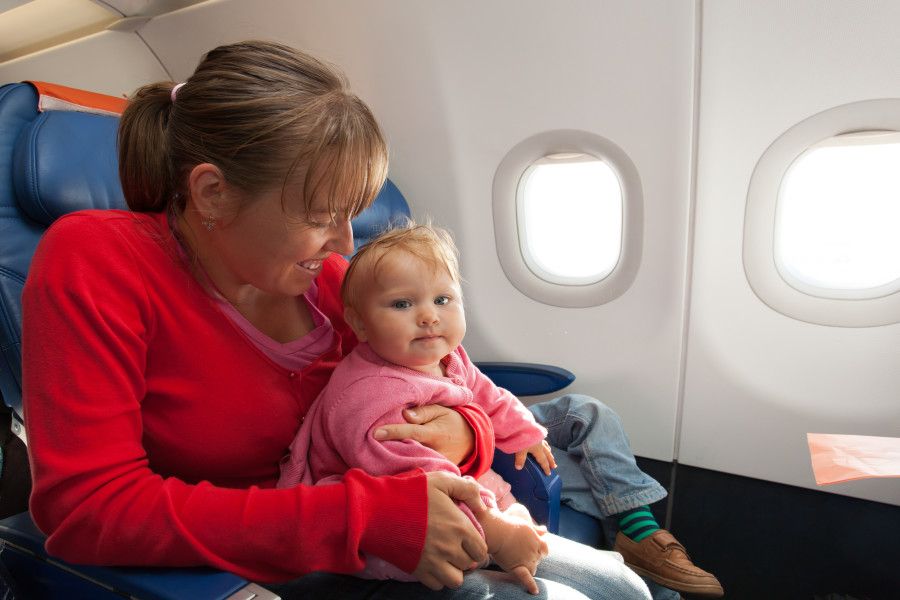 If your baby has had ear surgery or an ear infection in the past two weeks, ask his or her doctor if it's OK to fly. Having babies drink from the
breast or a bottle, or suck on a pacifier, can help. If your child has a cold or ear infection, a dose of
acetaminophen or
ibuprofen may help; check with your doctor for the right amount to give your child.
If your baby has had ear surgery or an ear infection in the past two weeks, ask his or her doctor if it's OK to fly. Having babies drink from the
breast or a bottle, or suck on a pacifier, can help. If your child has a cold or ear infection, a dose of
acetaminophen or
ibuprofen may help; check with your doctor for the right amount to give your child. Keep in mind that sleeping babies are easier for everyone. If possible, travel at a time when your baby naturally sleeps, or consider trying to put off a nap until it's time to fly. Flight delays can cause this to backfire if your exhausted baby decides to scream instead of sleep. But it may be worth a try.
Consider a diaper change right before boarding. A dry baby is a happy baby. Fortunately, when you do need to change a diaper in-flight, many planes have restroom changing tables.
 If yours doesn't, ask a flight attendant if there is a spot on the floor where you can spread out your changing pad. Some parents resort to diaper-changing on the closed toilet seat. If you try this, be sure to have a hand on your baby at all times and pack a disposable changing pad. Plan for delays; pack plenty of supplies.
If yours doesn't, ask a flight attendant if there is a spot on the floor where you can spread out your changing pad. Some parents resort to diaper-changing on the closed toilet seat. If you try this, be sure to have a hand on your baby at all times and pack a disposable changing pad. Plan for delays; pack plenty of supplies. Bring distractions. Pack some toys and books and be ready to play with your baby the entire time. A tablet with videos can be a good backup if the toys and books aren't helping anymore (we don't encourage entertainment media for children under the age of 2, but desperate times can sometimes call for desperate measures).
Don't let the glares get to you. Despite the best advanced planning and efforts, babies cry sometimes. Know that you did, and are doing, all you can. At that point, one of the best ways you can calm your baby may be to stay calm yourself. And remember that for every person who is glaring at you, there are plenty of people who have been through it themselves and have lots of sympathy.
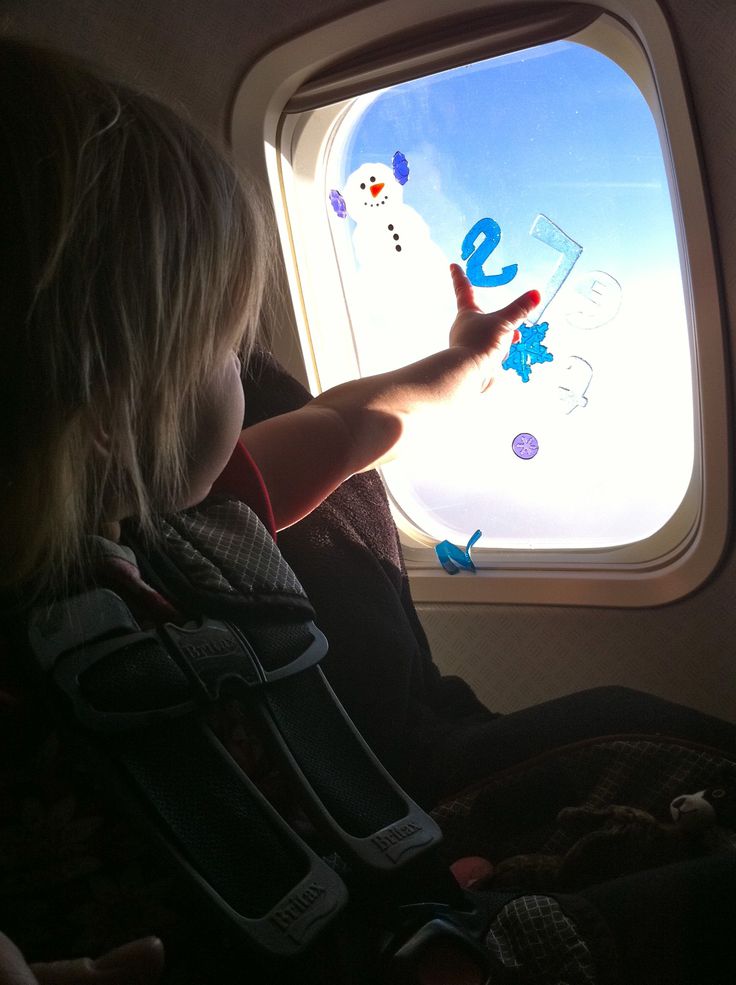
Ask for help. Arrange for your airline to help you if you need help making a connecting flight. Carrying a child safety restraint, your baby, and luggage through a busy airport can be challenging.
Additional Information:
Travel Safety Tips
Holiday Travel Tips
Precautions for International Travel: Information for Parents
FAQs: Frequently Asked Questions about Flying with Children (FAA.gov)
Destination-Specific Vaccine Recommendations for Travelers—Including Travelers with Children (CDC.gov)
About Dr. McCarthy:
Claire McCarthy, MD, FAAP is a primary care pediatrician at Boston Children's Hospital, an Assistant Professor of Pediatrics at Harvard Medical School, a senior editor for Harvard Health Publications, and an official spokesperson for the American Academy of Pediatrics.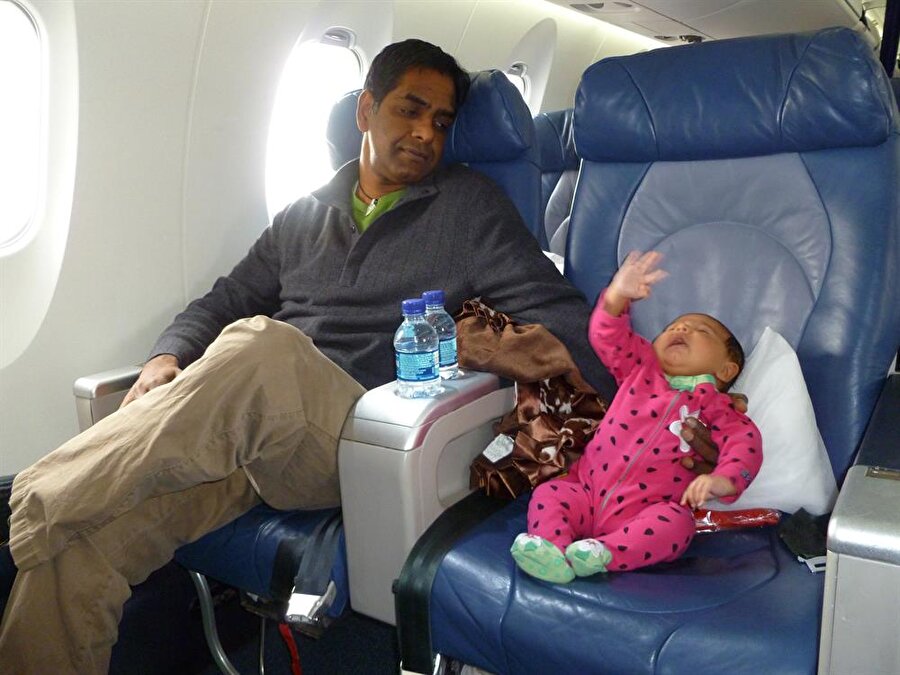 She writes about health and parenting for the
Harvard Health Blog, Huffington Post, and many other online and print publications.
She writes about health and parenting for the
Harvard Health Blog, Huffington Post, and many other online and print publications.
The information contained on this Web site should not be used as a substitute for the medical care and advice of your pediatrician. There may be variations in treatment that your pediatrician may recommend based on individual facts and circumstances.
Flying with a Baby - Everything you NEED to Know!
Flying with a baby for the first time can be intimidating, but don’t let that stop you from planning a trip. In reality even flying long haul with a baby is really only a very small portion of your entire trip.
A long haul flight with a baby might seem like an eternity at the time, especially if your baby is fussy on the airplane. Just know that you will get through it and once it’s all over it’s time to enjoy your trip.
Or the other likely possibility is that flying with a baby won’t be nearly as bad as you imagine or have built up in your head.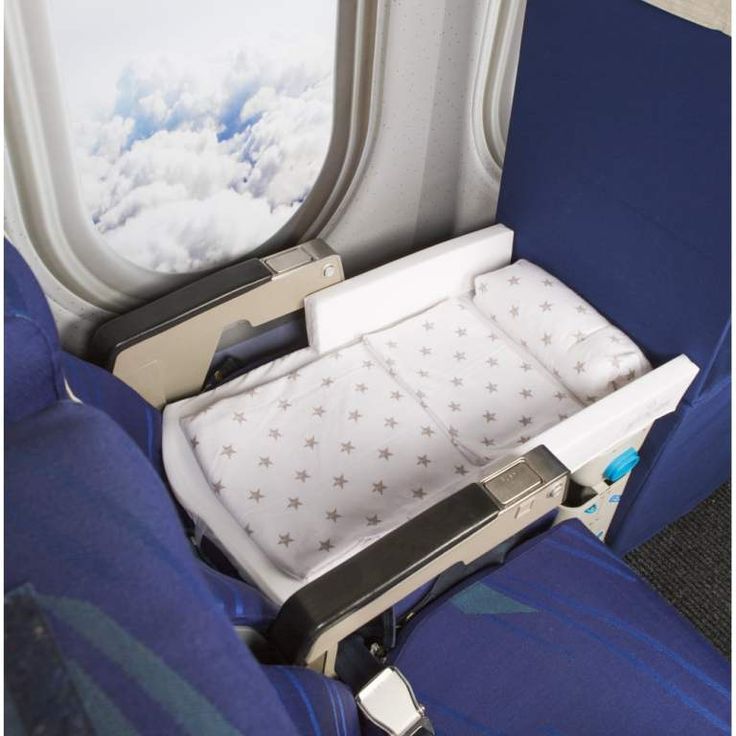 And if there’s one thing we know for sure it’s that your last flight with baby will not necessarily be indicative of what’s to come.
And if there’s one thing we know for sure it’s that your last flight with baby will not necessarily be indicative of what’s to come.
Babies change so fast. Flying with a 3 month old baby is very different than flying with a 8 month old baby, for example. Every flight and every time you travel with baby will be different. So even if you’ve had a bad experience flying with your baby in the past, don’t let that stop you!
So with that out of the way, here are all our best tips for flying with babies. Whether you are flying domestic flights or flying with a baby internationally, you’ll find everything you need to know in this post!
Flying with a Baby
- Flying with a Baby
- Do I Need a Passport for Baby?
- Flying Alone with Baby
- Flying with a Newborn
- Booking a Flight with a Baby
- Booking a Flight Before Baby is Born
- Airline Fares for Infants, Babies & Toddlers do Apply
- Reserving Your Seats for Air Travel with a Baby
- Flying with a Stroller, Car Seat and other Baby Equipment
- Tips for Flying with a Baby Car Seat
- What to Pack for Flying with a Baby
- Getting Through Airport Security with Baby
- Is it Possible to Fly Without a Stroller?
- Tips when Flying with a Baby
- 1.
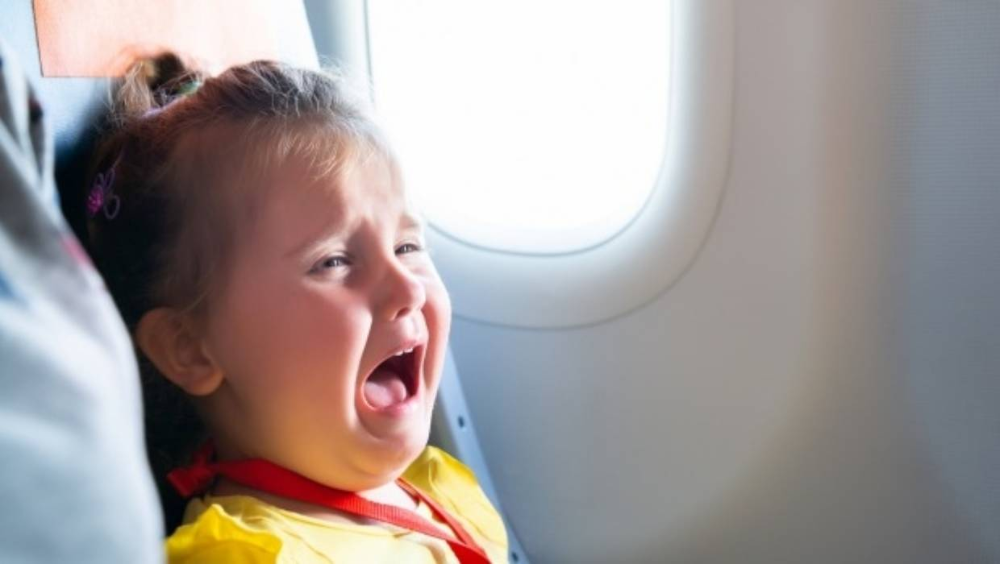 Choose the Best Time of Day to Fly with a Baby
Choose the Best Time of Day to Fly with a Baby - 2. Get Baby to Sleep on Airplane
- 3. Changing a Diaper on the Airplane
- 4. Breastfeeding while Flying
- 5. How to Entertain Baby on a Plane
- 6. Flying with a Lap Infant
- 7. Flying with a Lap Baby
- 8. Summary of Tips for Flying with a Baby
- 1.
- Travel with a Baby Checklist & Packing List
- Pin It For Later!
This post contains compensated links.
Flying with a Baby
Here are all our best tips for flying with a baby. We are certain you’ll find plenty of tips for traveling with a baby on a plane that will work for your family!
These tips for flying with babies cover all the questions related to traveling on a plane with a baby: from flying with a baby stroller and car seat to flying with milk for baby.
Do I Need a Passport for Baby?
If you plan to fly internationally with a baby, your baby needs a passport. If you are flying domestically, you likely only need your baby’s birth certificate to travel.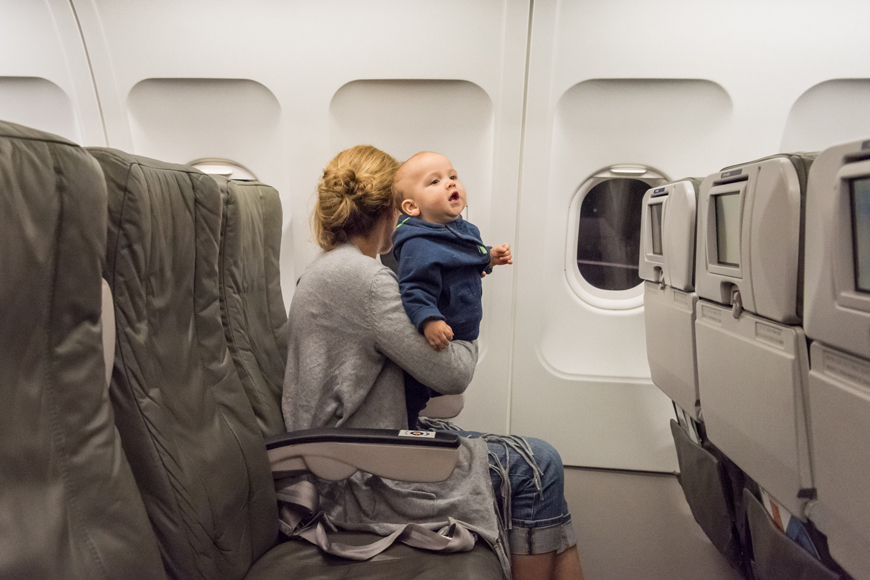 Either way, you will need proper identification to fly with your baby.
Either way, you will need proper identification to fly with your baby.
Don’t forget, typically passports need to be valid for 6 months beyond the time of your trip.
Flying Alone with Baby
If you are flying alone with a baby, you may need a consent letter signed by the other parent.
The Government of Canada strongly suggests that children (including babies) carry a letter of consent if traveling internationally with only one parent or guardian (or anyone else other than the parents).
The U.S. Customs and Border Protection has a similar recommendation for a consent letter for parents who are traveling internationally with a baby alone.
You may also need visas for both you and your baby, depending on where you are going.
Flying with a Newborn
How Old Does a Baby Have to be to Fly?
If you are traveling with a newborn very shortly after birth, be aware that there are age restrictions on the minimum age you can fly with an infant.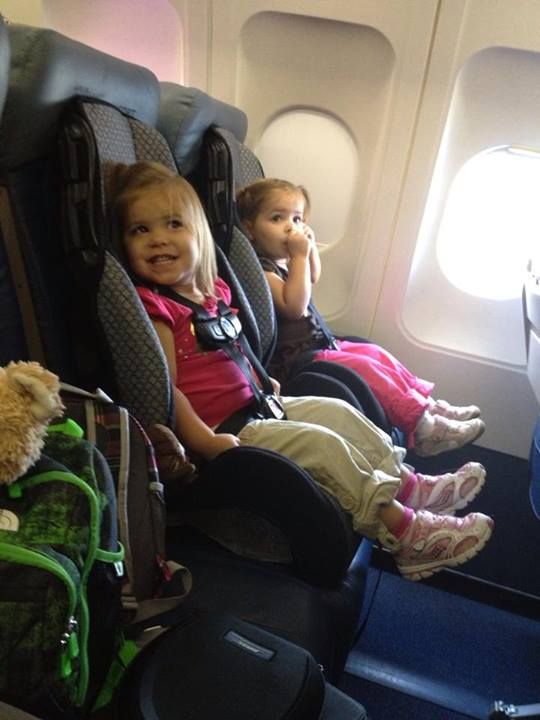 For some airlines, you can fly with a newborn as early as 48 hours, if there were no complications with the birth and you didn’t have a c-section.
For some airlines, you can fly with a newborn as early as 48 hours, if there were no complications with the birth and you didn’t have a c-section.
More commonly in North America, your baby will need to be at least 7 days old to travel by airplane. It’s best to check with your specific airline before buying tickets.
If you are flying with a newborn within that restricted time or if there were complications, you may need to get approval for travel from your doctor.
Booking a Flight with a Baby
Before you go ahead and book your flight with a baby, you’ll need to decide if you are booking a seat for baby or not.
If you are flying internationally with a baby, your baby will need a ticket even if you are flying with a baby on lap.
If you aren’t able to book this online, you will need to call your airline after booking your flight to ensure you get a ticket for your baby.
Booking a Flight Before Baby is Born
In the event that you need to book a flight before your baby is born, you will need to call the airline after your baby is born to ensure you get a ticket in your baby’s name.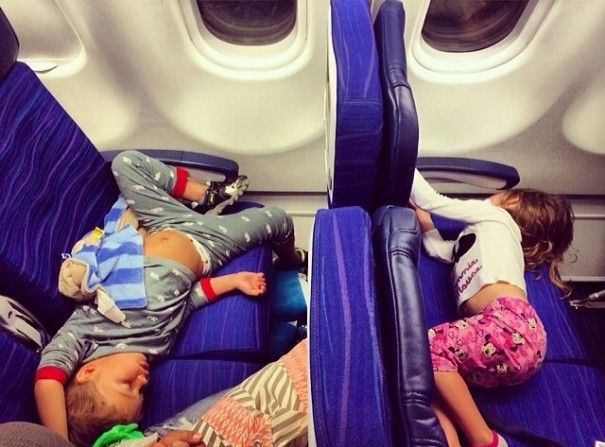
Airline Fares for Infants, Babies & Toddlers do Apply
Do Babies Fly Free?
If you are flying with a lap baby, then your baby does fly free domestically. If you are flying with baby on lap internationally, it is not free. You will typically be charged 10% of the adult fare.
Again, we recommend calling your airline immediately after booking your flight to get a ticket booked for your baby to ensure you are paying the 10% of the fare of the flight you just booked. You don’t want any surprises at the airport!
If you are buying a seat for your baby or toddler, then you will pay the adult fare for that seat. In this instance, you should check if your airline offers a discounted ticket for children. Not all do, but depending on the route or direction, you might be able to save your family money on the flight.
Reserving Your Seats for Air Travel with a Baby
If you are hoping to get your baby to sleep on the plane, reserving the right seats will make a difference! If you are flying with a lap infant, reserving a window seat will give you more privacy.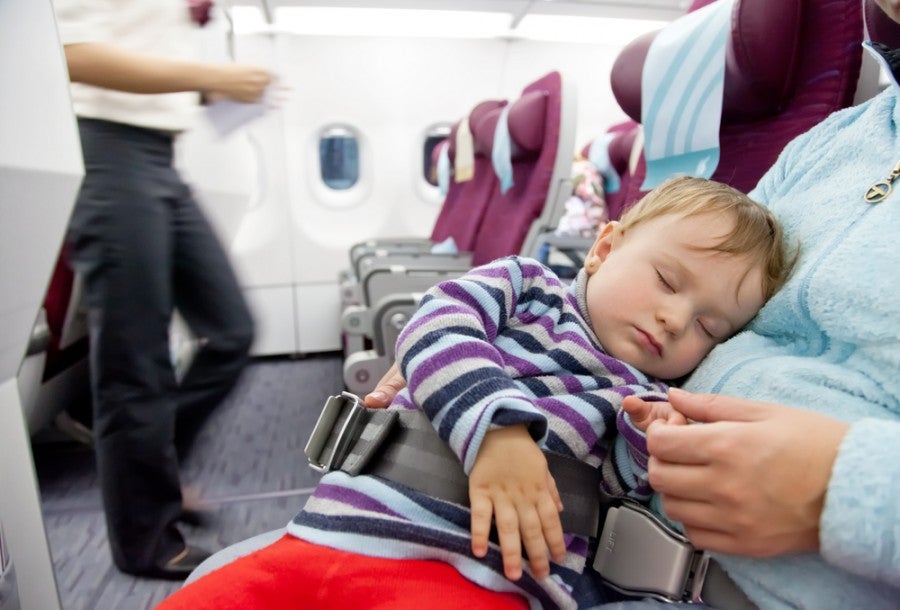
One of our most important baby air travel tips is to stay away from the airplane bathrooms, where people tend to congregate and talk. Or worse yet, the slamming bathroom door which is likely to keep your baby from sleeping on the flight.
If you haven’t purchased a seat for your baby, then, if possible, reserve an airplane bassinet and the appropriate bulkhead seats. Some major airlines have bassinets for babies in airplanes. Which means, rather than holding your baby during long haul flights, you’ll have a place to lay baby down!
Here are a few things to know about booking an airplane bassinet when flying with a baby:
- Airplane bassinets are not available on all flights.
Check with your airline to see if they are available. You may need to call your airline directly, but it will be worth the effort.
- Reserve the seats that will enable you to book a bassinet.
These are typically only the bulkhead seats so there will only be a few spots where a bassinet can be made available.
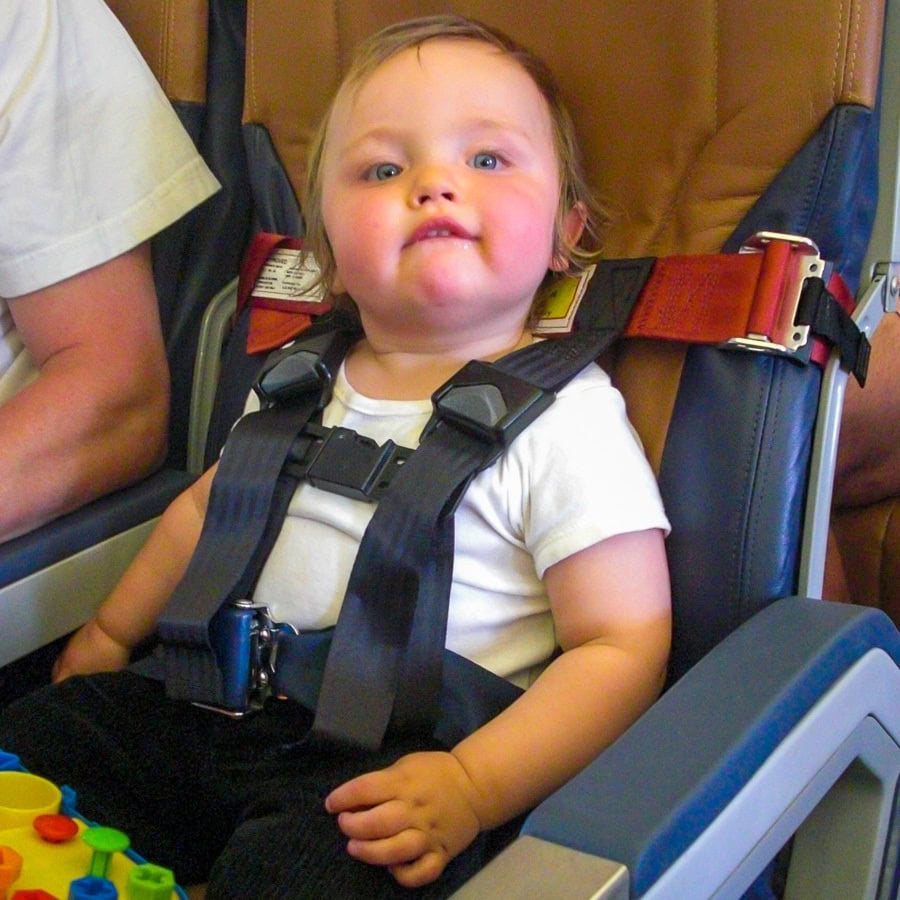 Again, call your airline.
Again, call your airline. - Airplane bassinets, if available, are on a first-come, first-serve basis.
Have a back up plan on how you’ll get your baby to sleep on the flight in the event that you don’t get one. A baby carrier is a must-have for taking a baby on a plane.
- Be aware that airplane bassinets are only provided after take-off and before landing.
You will need to wait until the flight attendant can safely bring you the bassinet, after take-off. In addition, you will need to pick up your baby in the event of turbulence.
- Make the airplane bassinet comfortable.
Consider getting a CoziGo Bassinet and Stroller cover to help your baby sleep during the flight. We also brought a sleepsack and hat to keep our baby warm and comfortable.
The safest way to travel with a baby or toddler, is to purchase a seat for your baby and travel with a car seat on the flight. As mentioned above, this will cost you either a discounted child fare or the full adult fare.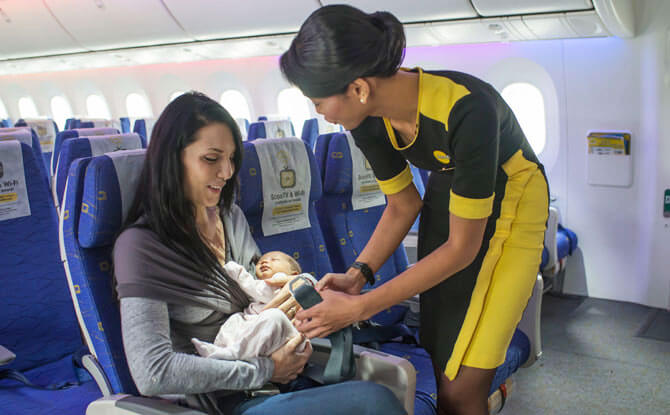
Other options, if there is a chance you will be able to snag an extra seat on your flight, you can bring your travel car seat all the way through security and to the airplane. Talk to the flight attendants when you check in and again at the gate to see if you can get that extra seat for your baby. If it doesn’t work out then you will need to gate check your car seat.
If you are gate checking your car seat, don’t forget you’ll want an easy way to carry the car seat through the airport. Here are the best options for transporting a car seat through the airport:
- Your stroller
- A car seat travel cart
- A strap to attach your car seat to your luggage
- A car seat bag with wheels or backpack straps
Flying with a Stroller, Car Seat and other Baby Equipment
What baby travel items can you bring on the airplane with you for your flight with a baby?
We recommend NOT giving out “Baby’s First Flight” bags and what to do instead!
Whether you are flying with a lap infant or you have bought a seat for your baby or toddler, you can usually check two baby items. These will typically include a car seat, a stroller or a travel crib.
These will typically include a car seat, a stroller or a travel crib.
We have at times traveled with a baby backpack carrier and used it as one of our checked baby items. Here’s even more tips for flying with a hiking baby carrier.
It’s best to gate check the stroller and car seat, but you can check them along with your luggage. We recommend protecting them with a car seat travel bag and even a travel bag for strollers if you plan to check them.
Alternatively, as we mentioned above, even if you have not bought a seat for your baby and the flight is not full, you can bring the car seat to the gate and attempt to get a spare seat on the flight for your baby. You’ll likely want to bring your stroller along too to help carry everything.
Looking for a lightweight travel stroller? Check out these best strollers for air travel.
As for other baggage allowances, please check with your individual airline on the rules, but typically if you have not bought a ticket for your baby, they do not get a baggage allowance.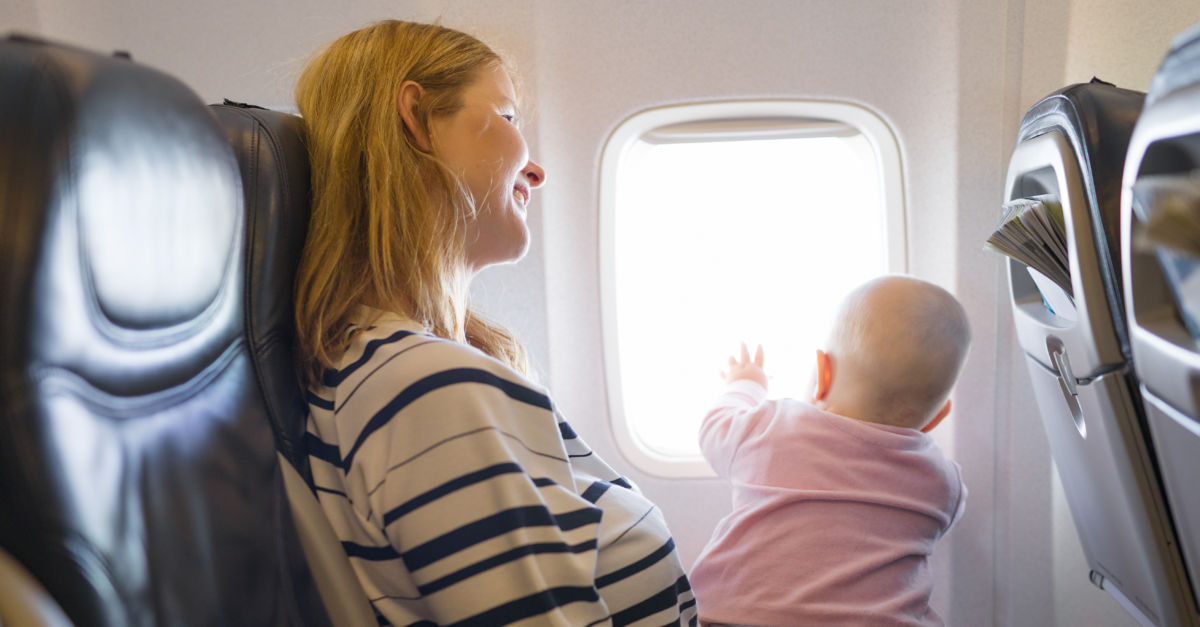 You can likely bring an additional small carry-on for your baby with their necessities (diapers, wipes, baby food, etc).
You can likely bring an additional small carry-on for your baby with their necessities (diapers, wipes, baby food, etc).
If you have bought a ticket for your baby and they have their own seat, then their baggage allowance is the same as that of an adult plus their baby items. Please confirm the rules for your specific flight and airline, since this is likely to change as airlines continue to charge a fee per bag.
Tips for Flying with a Baby Car Seat
If you’ve bought an extra seat for your baby and you know your baby will travel best in a car seat, here are some tips to flying with a car seat:
- Before you plan to bring your car seat on a flight, make sure that the car seat is approved for air travel. How do you know your car seat is approved for air travel? It should have the date it was manufactured plus it will specify the design standards for which it is approved (i.e. FAA-approved child restraint system).
The best way to find out what you need for your particular airline is to google the airline plus “traveling with children”.
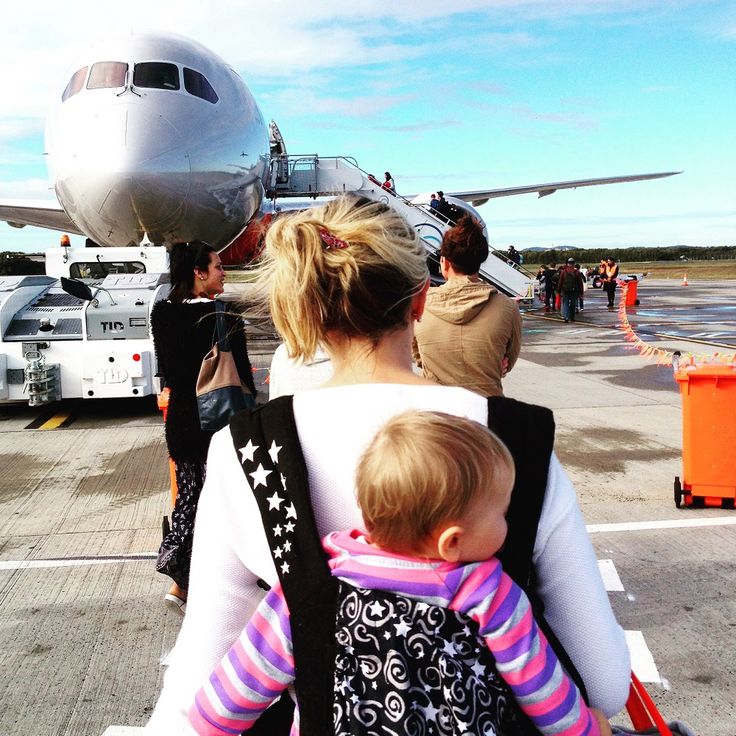 Most will specify how to ensure your car seat will be approved for air travel.
Most will specify how to ensure your car seat will be approved for air travel. - Check with your airline about any specific policies they have on flying with baby car seats on the airplane and the size requirements.
- Try to board early or if they allow families with small children to board first. This will give you more time to install the car seat. If you had hoped to keep your baby off the airplane until the end of boarding, then one parent should go on and install the car seat.
- The car seat will need to be installed either in the window seat or in the middle seat, if seated in the center of the airplane. It can not block the exit for any seats on the airplane. It also can not be installed in an emergency row.
- If you plan to fly with your car seat frequently, consider getting a lightweight travel car seat that is easier to transport.
- If you haven’t bought an extra seat for your baby, your best bet for getting an extra seat free of charge is to arrive early.
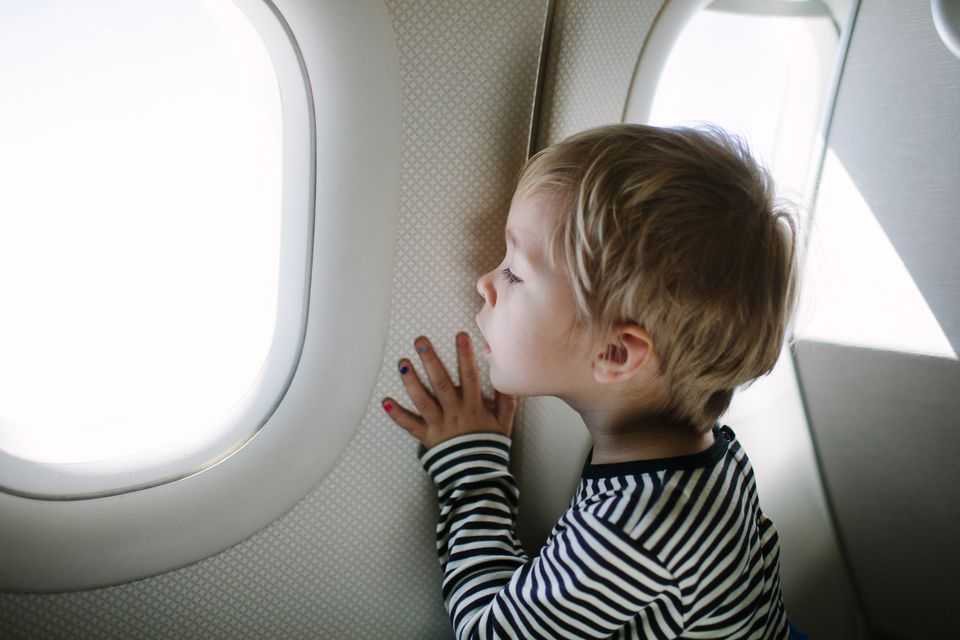 Ask at check-in if the flight is full and if there is a possibility of getting the seat next to you blocked off. Then bring your car seat through security with you. Ask again at the gate to make sure you’ll have the extra seat.
Ask at check-in if the flight is full and if there is a possibility of getting the seat next to you blocked off. Then bring your car seat through security with you. Ask again at the gate to make sure you’ll have the extra seat. If you aren’t able to get a seat secured, you will need to gate check your car seat. Bring a car seat travel bag along in case this happens to protect your car seat when you gate check it.
- Take the time to review the manual of your car seat so know how to install it with the lap belt on the airplane. If the car seat is to be installed rear-facing, you might need a seatbelt extender that you can request from the flight attendant.
Which lightweight car seat to buy for travel? Cosco Scenera Next car seat is the one that’s most recommended because it’s light, gets great ratings, and it’s easy to carry.
What to Pack for Flying with a Baby
Looking for a checklist for flying with a baby? Getting organized is key and having a packing list for travel with a baby will ensure you don’t forget anything (we have a Flying with Baby Checklist & Packing List available for download at the bottom of this post).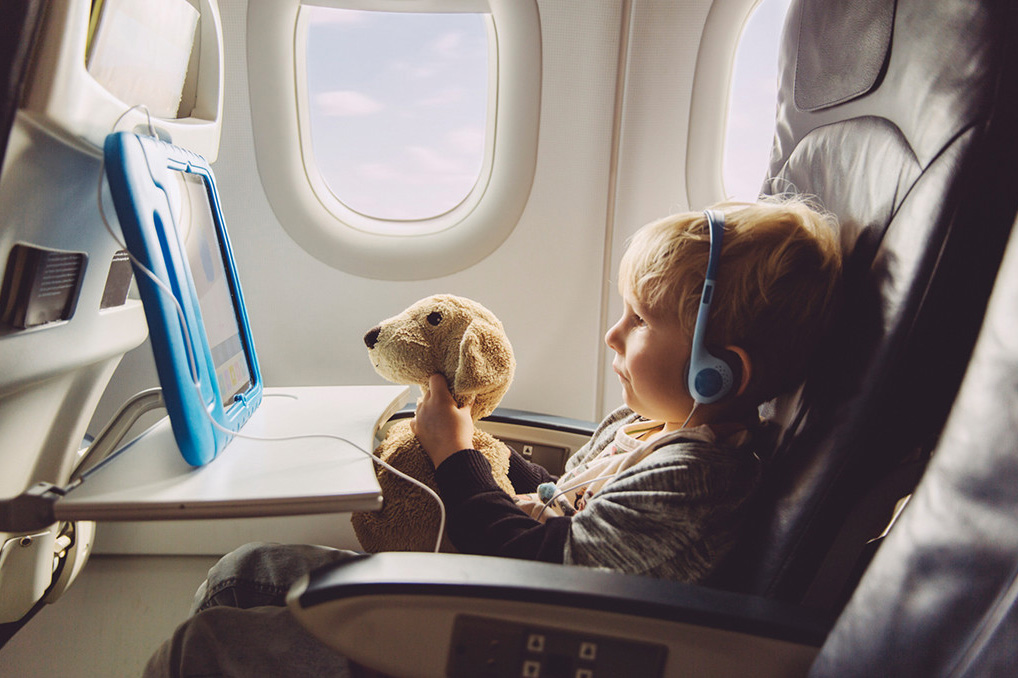
For the flight itself, we recommend keeping it fairly simple so you aren’t carrying too much. Stick to the must haves for flying with baby.
You’ll already feel like you need an extra hand or two when flying with a baby. Here are the essentials for flying with a baby:
- Baby carrier (see our best baby carriers for travel)
- Baby wipes (bring a lot in a baby wipes travel case)
- Diapers (enough for the flight plus a few extra)
- Portable change mat
- Extra outfit for baby (or two depending on length of flight)
- Pjs for baby
- Extra shirt for parent(s)
- Baby food
- Formula (pre-measured if using powdered formula)
- Bottles (plus 2-3 extra) plus a travel bottle warmer
- Breast pump (if necessary)
- Travel toys to entertain baby on plane (keep it simple)
- Inflatable breastfeeding pillow
- Car seat (either checked, gate checked or brought onto airplane)
- Travel stroller (if using in airport then gate check your stroller, otherwise check it with your luggage)
- Car seat travel Bag
- Stroller gate check bag
You can also see all the products mentioned in this post on our Flying with a Baby shopping list on Amazon.
Getting Through Airport Security with Baby
Getting through a security line can leave you sweating and this is where packing light is really valuable. First, look for a family line or take advantage of Nexus/Global Entry (if flying to/from the US or Canada).
Next, put your baby in a baby carrier for security. This will allow your hands to be free to remove any liquids from your bag, fold up your stroller, etc. There’s a chance you won’t have to remove your baby from the carrier, but this isn’t a guarantee.
It will be easiest if you travel with a lightweight travel stroller that is easy to collapse to make getting through security easier. Don’t forget to empty all the pockets of your stroller before putting it through the x-ray machine. If your stroller won’t fit in the x-ray, inform the security personnel, who may be able to do a physical/visual examination.
Breastmilk, formula and baby food do not fall under the 3.4 ounce (100m) liquid restriction and can be brought through security in reasonable quantities. This applies to flying with baby food pouches and flying with homemade baby food.
This applies to flying with baby food pouches and flying with homemade baby food.
You will still need to remove the breastmilk, formula or baby food from your bag for screening.
The TSA website on traveling with children has the information on how it will be screened. It never hurts to print this out and have it with you in case you run into an problems.
Is it Possible to Fly Without a Stroller?
I can speak from experience that it is possible to fly without an infant travel stroller. We have on several occasions flown with just a baby carrier, to keep it light.
We hadn’t brought the car seat with us and rented a stroller at our destination through a reputable baby equipment rental company, so we checked our bag and brought only carry on essentials for baby with us.
We only recommend this if you are traveling light!
Read all about travel with a baby carrier or stroller, where we help you decide which is best for your trip!
Here is a wonderful post on trusting your instincts as a parent and letting your baby teach you what Google cannot.
Tips when Flying with a Baby
It’s no surprise, but advice on flying with a baby is amongst the most asked questions! Many parents worry about how they are going to keep their baby entertained for a long haul flight, especially if the baby is mobile.
The best advice I can give on traveling by plane with a baby is to stay calm and focus on your baby. You will survive flying with a baby. And chances are it won’t be as bad as you think.
Your baby will enjoy the new environment and everything on the plane will become a new travel toy for your baby (this includes the seatbelt, plastic cups and spoons and the window shade). Let them explore!
As previously mentioned, your part will be to stay calm. Your baby will feed off your energy. More importantly, when traveling with babies on airplanes, set your expectations accordingly.
Go into the flight expecting that airplane travel with baby means you will spend the majority of the time entertaining your baby and any sleep you get will be a bonus!
1.
One of the best tips on flying with a baby, aside from staying calm, is to pick a flight that will give you the best chances of success. If you think it is unlikely that your baby will sleep during the flight, then choose to fly early in the morning when your baby is at her happiest.
If you can fly around nap time, this will be your best bet to get your baby to sleep on the plane.
If you have a long haul flight, getting an overnight flight that leaves shortly before your baby’s bedtime will be your best bet. This will give your baby time to explore the airplane and the new exciting environment before you can start the bedtime routine. With any luck your baby, once asleep, will sleep for the remainder of the flight.
Some people suggest not sticking with a routine and just going with the flow when traveling with a baby on a plane. This will definitely work for some babies but not all. If your baby is a nightmare if they are overtired, then you may still want to try to get your baby to nap on the plane.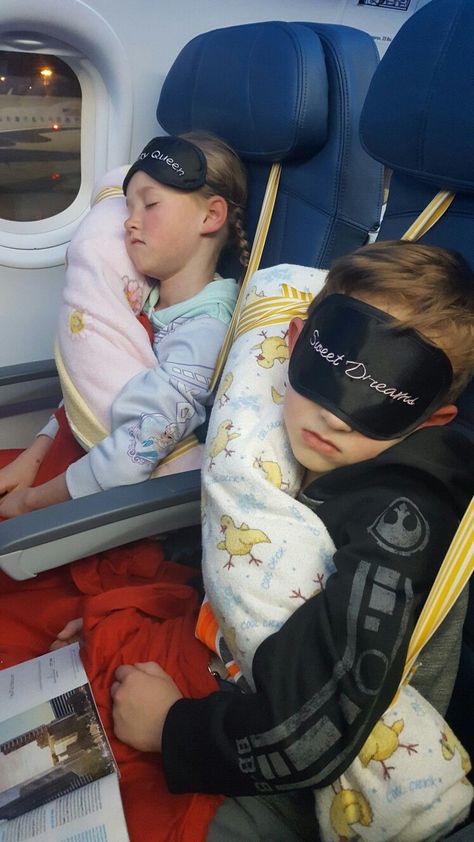
On the other hand, try not to get stressed about whether your baby will sleep or not. I have done that and it didn’t make anything better. In fact our baby was up for 12 hours once without a nap when she was 10 months old (she refused to sleep on the flight) and though it was a lot of work to keep her entertained on the flight, she was happy enough. We got to our destination and she fell asleep in the carrier instantly.
Wondering if your baby’s sleep on the plane will affect baby jet lag? Get all your baby and toddler jet lag questions answered in this post with our experience dealing with jet lag plus baby jet lag tips from baby sleep experts!
2. Get Baby to Sleep on Airplane
As parents we worry about our baby’s sleep schedule, even if we are flying. This is especially true if you’ve just gotten your baby to start sleeping through the night.
Here are our tips for getting a baby to sleep on an airplane:
- Bring a baby carrier.

The most important thing you’ll want to bring for traveling by plane with baby is a baby carrier. This will allow you to keep your baby close and you can walk or stand to help your baby get to sleep. This will enable you to have hands free when your baby does fall asleep. Keep in mind, you will not be able to use it for take-off or landing.
- Choose the right time to fly with your baby.
Choose a time to fly with your baby that will have the most success for getting your baby to sleep on the airplane. If your baby doesn’t nap well on-the-go, try for an overnight flight. If your baby refuses to sleep anywhere but her crib, fly during the day.
- Use your nap or bedtime routine.
Babies like the comfort of routine. One of the best tips on how to travel by plane with a baby is to take the time to change your baby into pajamas, read a familiar story and feed your baby just like you would at home.
- Feed before sleep.
While you’ll likely be feeding your baby during take-off to help with their ears, you should also include this in their bedtime routine just like at home.
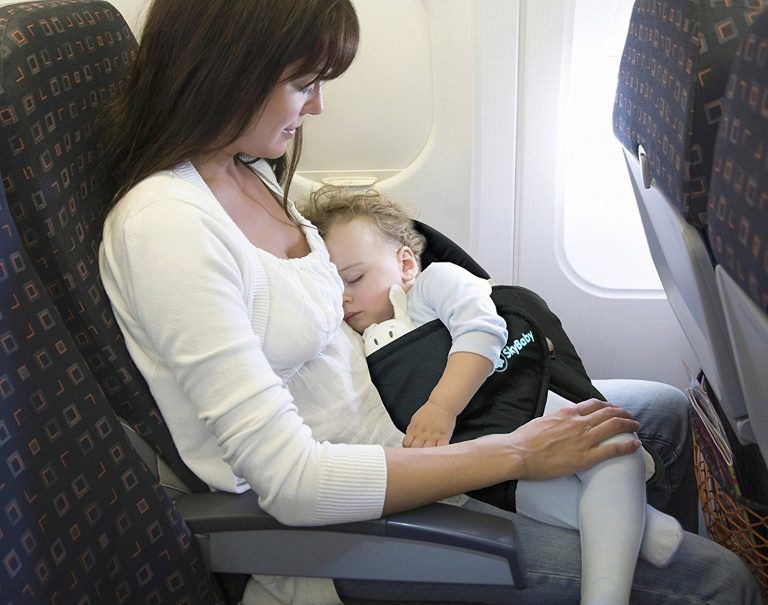
- Don’t try to get your baby to sleep too soon.
Give your baby time to be excited in the new environment before you attempt a nap.
- Try to get your baby to sleep before they get overtired.
Letting a baby or toddler get overtired can be a recipe for disaster. This may be out of your control, but if possible start your bedtime routine as soon as you can to keep a similar schedule as your typical day at home.
- Bring a travel car seat.
If your baby sleeps well in a car seat, not only is that the safest way for a baby to fly but it might be your best way to get your baby to sleep.
- Get extra space.
Even if you didn’t purchase a seat for your baby, try to get an extra seat for your baby if the flight is not full. Having the extra space and privacy will help make flying with an infant or baby easier.
- Don’t get stressed.
Knowing you are calm and stress free will keep your baby from feeling anxious and should help get you that coveted sleep for your baby on an airplane.
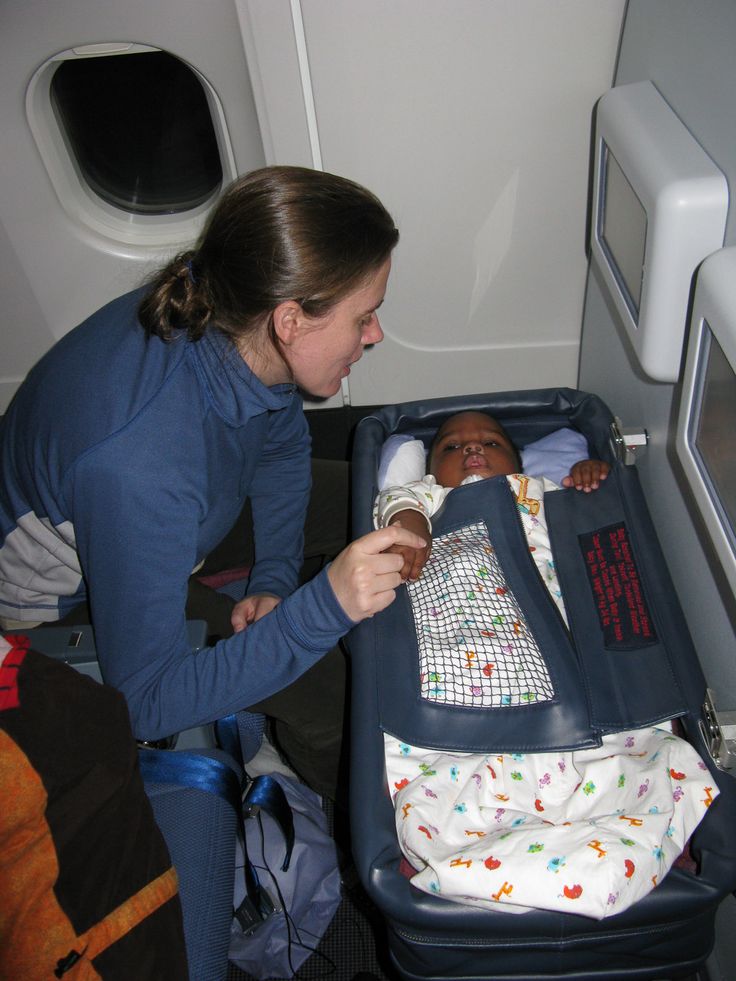
- Reserve your seats.
Choose seats that either give you the option of using a airplane bassinet or the window for more privacy. Also, make sure your seats are not too close to the toilets, where people tend to congregate or the slamming door may continually wake your baby up.
Flying with a toddler? We get so much use out of our Fly Tot inflatable airplane cushion and our toddler has slept the entire flight almost every time!
3. Changing a Diaper on the Airplane
There’s a real lack of consistency when it comes to change tables and diaper changing on a flight. The flight attendants will let you know which toilet has the change table. If they don’t, be sure to ask them. They may also give you a bag to put the dirty diaper in before putting it in the garbage, but not always.
As you know, the toilets are extremely small and trying to maneuver in there with a wriggly baby is no easy feat.
Here are our tips for changing diapers on a plane:
- Take only the essentials with you.

Plan to take only the diaper changing essentials (not your entire baby backpack diaper bag) with you when you change a diaper on a plane. The Sidekick hip baby by No Reception Club is the perfect solution! It fits perfectly in The Getaway Bag and makes for easy access of all your diaper changing essentials.
See our full review of The Getaway Bag by No Reception Club here.
- Be prepared with everything you need.
It’s best to have them easy to grab at the top of your carry-on by putting a pack of wipes, diaper, change mat and extra change of clothes in a Ziploc bag or diaper changing clutch. You can grab diaper changing essentials, baby and be on your way.
- Avoid it if possible by changing baby before boarding the flight.
Make sure you change your baby’s diaper right before you board the plane. You just never know how long you’ll be waiting for those seatbelt lights to come off and you can get up again.
- Don’t change baby at your seat.

I’ve seen it asked in forums if you can change your baby at your seat. This is not recommended, however I am willing to bet there are plenty of moms who have changed their babies on their laps if absolutely necessary.
4. Breastfeeding while Flying
If you have any concerns about breastfeeding while flying you can look into your airline’s policy about breastfeeding on an airplane. There shouldn’t be any issues with it, but it doesn’t hurt to be armed with information.
The window seat will give you the most privacy for breastfeeding during your flight.
If you will need to pump during your flight, you can get all the tips for pumping on an airplane in our post flying with a baby and breastfeeding.
5. How to Entertain Baby on a Plane
Keeping your baby entertained on a plane doesn’t have to be difficult. We suggest keeping it simple and making use of what you have around you, while packing just a few baby travel toys. Trust me when I say that your baby will be far more entertained by a plastic cup and spoon on the plane than any toy.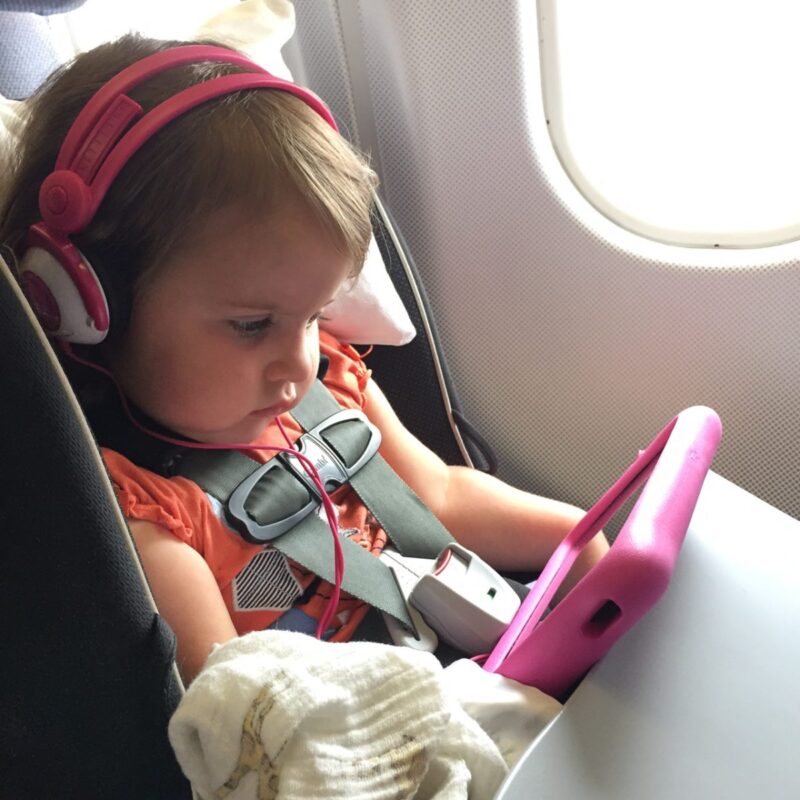
That being said, it won’t hurt to make sure you have a few favorites or a couple of new toys with you. You can even put away a favourite toy for a few weeks at home, then bring it back out when flying long haul with baby.
You can get more ideas from our full list of travel toys and airplane activities for babies and toddlers.
6. Flying with a Lap Infant
Flying with an infant is likely to be your easiest flight. Newborns and infants sleep a lot and will easily be lulled to sleep by the engine noise of the plane.
Bring a carrier to help get your baby to sleep and use all our flying with a baby tips above.
7. Flying with a Lap Baby
Flying with a lap baby or a lap toddler gets a little more complicated. Once your baby is on the move, it’s not likely they are going to want to sit in your lap. This will be especially difficult with a lap toddler, this post has all our tips for flying with a toddler.
This is the time when you will want to do whatever you can to get some extra space on the airplane, if you haven’t purchased a seat for your baby.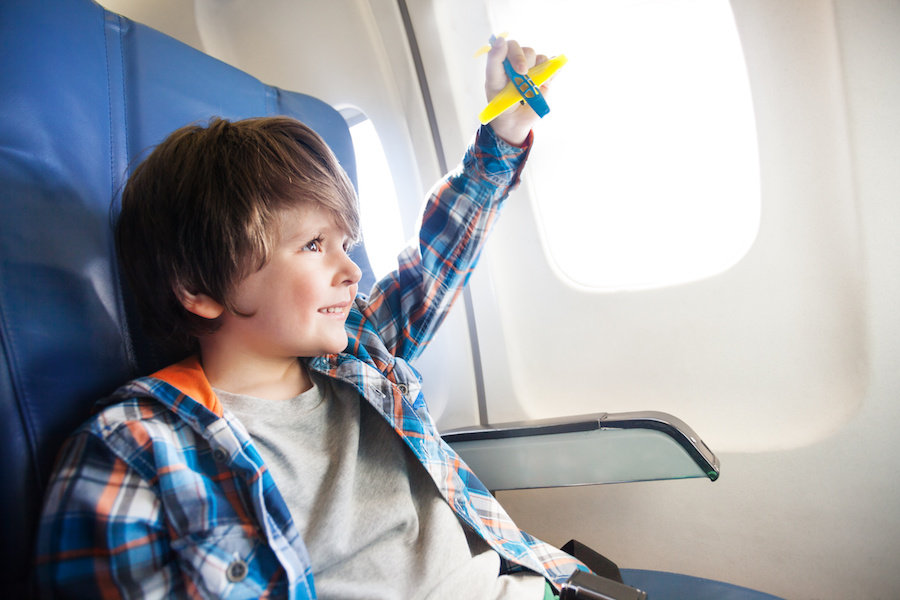
Make sure you arrive early to give yourself the best chance of snagging any spare seats. Also, be as polite and friendly as possible to the check-in agents, the gate agents and the flight attendants. They will be your best allies throughout the flight.
If you need to, take your baby for a walk down the aisle. Let them explore the plane (within reason). Find someone who wants to play peek-a-book with your baby.
Encourage your baby to get some sleep on the flight. Finally, try to stay calm and just know that you will get through the flight.
8. Summary of Tips for Flying with a Baby
There are so many aspects to cover when flying with a baby, but in reality it’s pretty simple. Here’s a shortlist of all the tips for flying with a baby:
- Talk to your airline. Some airlines like British Airways will allow you to choose your seats for free when traveling with a baby. Do some research on the airline you are flying with by reviewing their family travel or traveling with children section.
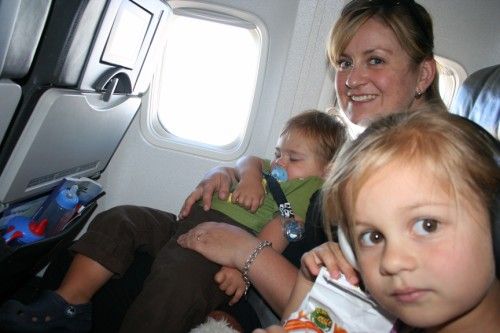 Take the time to call them if necessary, it will be worth your time.
Take the time to call them if necessary, it will be worth your time. - Check the rules of flying with a baby. It’s impossible to include all the rules for different airlines and countries in one post because they aren’t consistent. For example in Canada, Transport Canada requires that parents can not travel with more than one infant. If you are flying with twins in Canada you will need one adult for each baby.
For this reason it’s important to educate yourself on the rules for flying with a baby both through security (every country has different rules) and for your airline.
- Book your flight for the best time of day to fly with your baby (if possible) and reserve the best seats for your flight.
- Feed your baby or give a pacifier during takeoff and landing to help with the cabin pressure change for your baby’s ears.
- Pack lightly and bring a baby carrier to be hands free. A baby carrier is one of our recommended baby flying essentials, as it will make going through security and the entire flight easier.

- Put your diaper changing essentials in an easy to grab place and only bring what you need to the toilet to change your baby on the airplane.
- Give your baby as much time to play off the airplane as possible. One parent can board early with the carry-on to get space near your seat, while the other parent can wait to board giving your baby less time on the airplane. We love these travel play mats to give your baby a chance to move around before needing to be in a car seat or bassinet for a long flight.
- Don’t let rude comments upset you. As much as there are people who will be willing to help, there may be other passengers who can’t help but be rude. Ignore them and don’t engage them. Above all, don’t let rude comments from other passengers rattle you.
You are as entitled to be on that airplane as they are, after all you purchased a ticket just like they did. And they are adults, if they want they can just put headphones on and block out the sound.

- The last trip won’t be a reflection of the next trip. Babies change so much. If your last flight was a disaster, learn from it but don’t let it scare you off. There may be a few things that you can do differently, but more likely your baby will have changed from that flight.
- Take help when it’s offered. There are no prizes for doing it alone. Many people will go out of their way to help parents flying with babies, accept their help!
Travel with a Baby Checklist & Packing List
We’ve prepared a checklist for planning travel with baby and a packing list for flying with baby. Click to download Travel with Baby Checklist
You can also see all the products mentioned in this post on our Flying with a Baby shopping list on Amazon.
Don’t miss our web story with our top Baby Flying Tips.
Pin It For Later!
How to fly with a child: the rules of comfortable travel | Useful information
Airplane is one of the safest and most comfortable ways to travel around the world.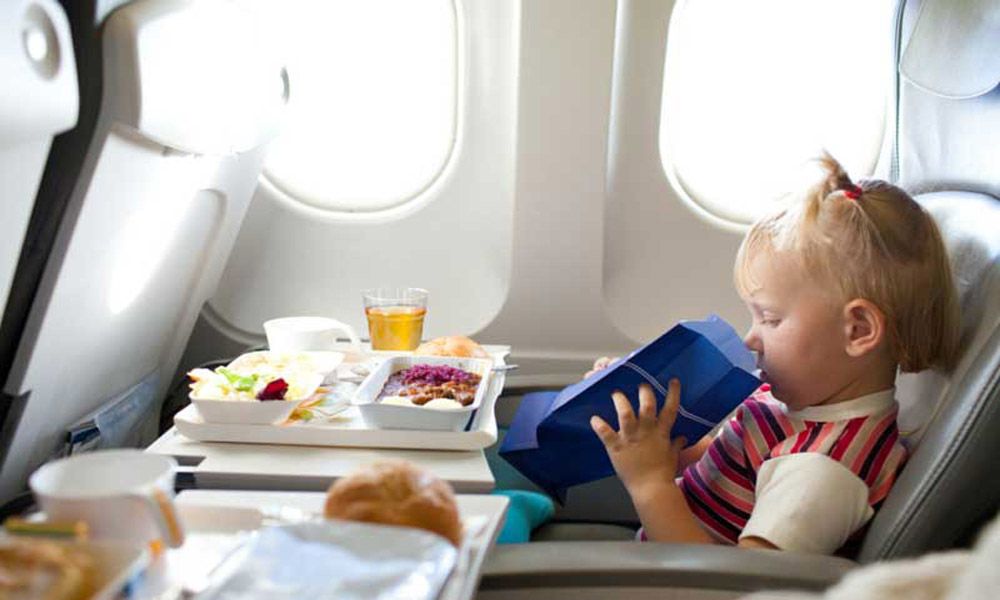 However, many parents are afraid to fly with their children, considering air travel difficult and inconvenient.
However, many parents are afraid to fly with their children, considering air travel difficult and inconvenient.
We declare - it is not so! Today we have prepared tips for you on how to fly with children so as not to cause inconvenience to them, yourself and others.
We assure you that our little tricks will help you exhale and look at air travel with the enthusiastic eyes of your child. nine0003
How to fly with a child: how much does it cost
As with many other modes of transport, plane tickets for children are cheaper than for adults. Airlines apply special fares for children:
- Tariff infant (infant) - for children from 0 to 2 years. Children travel without a seat, in the arms of an adult.
Baggage "infants" may not be relied upon - at the discretion of the airline. But the stroller is almost always transported free of charge. nine0016 In some cases, children under 2 years old can travel without paying, most often on domestic flights of airlines.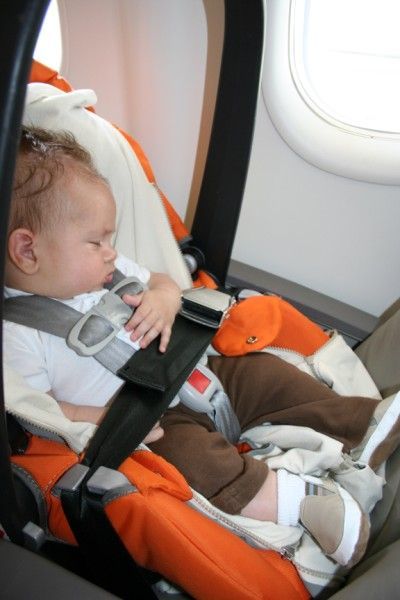 In this case, all luggage is with an adult.
In this case, all luggage is with an adult. - Child tariff (children) - for children 2-11 years old . As soon as babies turn 2 years old, they start traveling on the Child fare, which is 50-75% of the adult fare. It involves a separate seat for a small passenger, as well as baggage check-in according to adult standards . But this rule applies only to scheduled flights. nine0015
The Child rate also applies to children under 2 years of age if parents purchase a separate seat for them. - Children over 12 years of age fly at full price but may qualify for special airline youth fares, if available.
How to fly with a child: documents for crossing the border
If you are traveling with a child abroad, check the list of documents required for departure. For children under 16, the standard list of documents looks like this: nine0003
- Child's birth certificate.
- Permission to leave from parents or one of them, certified by a notary - if the child leaves without being accompanied by parents or one of them.
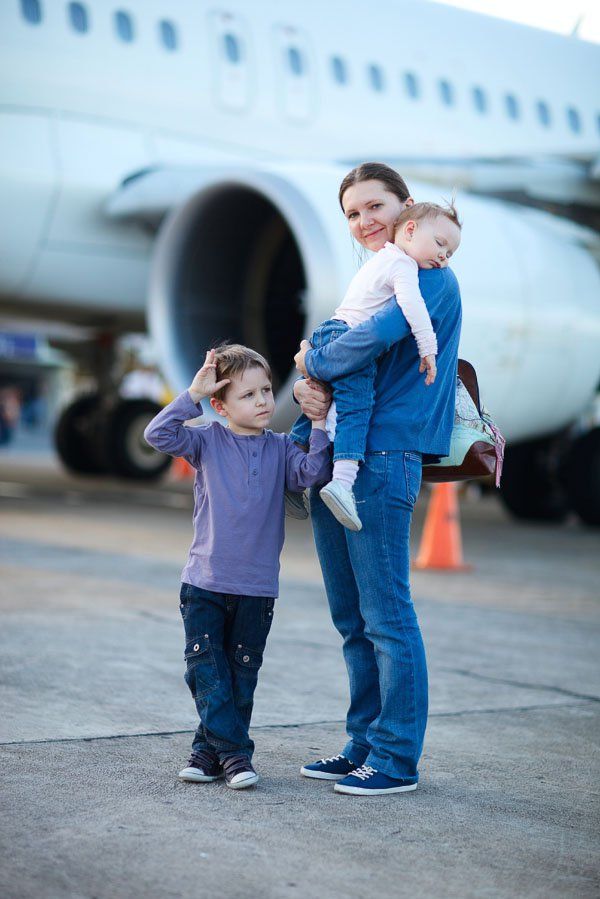
- Child's travel document.
- Visa - if necessary.
Children over 16 only need a travel document and a visa.
How to fly with a child: planning, airport, check-in, plane
Traveling by plane is an exciting event for both the child and his parents. But if the excitement of the child is joyful, then the parents experience real stress. Follow our rules to stay calm and collected.
- Book your tickets in advance. So you can choose the best seats. In addition, some airlines limit the number of young children on board. Make sure to be among them. nine0013 Take less crowded flights. People rarely sit down with parents with children unless absolutely necessary.
- Fly in the morning. In the morning, children are traditionally in a better mood, which means they behave better. nine0018
- Be the first to check-in and board. Check in as early as possible to avoid queues and get the best seats.
- Choose bright colors. Dress your children brightly and it will be easier for you to find them in the crowd.
- Feel free to ask. Ask staff at check-in not to seat people next to you if possible. Ask your neighbor to switch places with you.
Ask the flight attendant to heat up water for you to eat. Ask to give way to you at customs control. You will be surprised how much people are willing to do for travelers with children. nine0018 - Use children's facilities. Almost every airport has a children's room, a feeding and changing room. Airplanes on long flights have toilets designed for diaper changes. There may be children's coloring kits on board - ask the flight attendants about this.
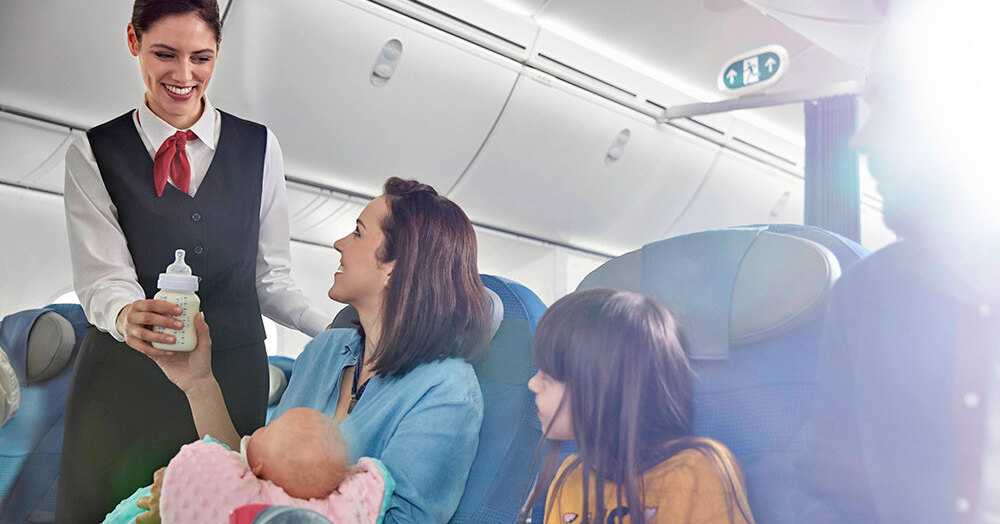
The fewer people on the flight, the more likely it is that your baby will be able to get a separate seat even without a purchase.
During the holiday season, finding a less crowded flight is not easy, but be aware that Tuesday, Wednesday and Thursday are less popular days for flights.

How to fly with a child: what to take on a plane
In order for your child to feel good during the flight, you need to meet all his needs. He should be full, he should not be scared, bored or uncomfortable. Think in advance of the list of things that you will take on board, or use our tips. nine0003
- Clothing. Clothing should be light, comfortable, without chafing seams. Shoes should be easy to put on and take off. It can be hot or cold on the plane - think about this moment in clothes. Take a change of clothes for the child and a t-shirt for yourself.
- Food. Many airlines offer a children's menu on their flights - this should be ordered when buying tickets. But we still recommend bringing fruit, lollipops and biscuits with you. nine0018
- New toys. Buy a toy in advance and take it with you. New fun can keep the child longer.
- Shields - yes .
 Even if you don't like spending time in front of the computer, bring along a tablet with toys, a DVD player with cartoons, or let your kids watch TV on the plane without restrictions.
Even if you don't like spending time in front of the computer, bring along a tablet with toys, a DVD player with cartoons, or let your kids watch TV on the plane without restrictions. - Wet wipes. They will help fight sudden stains.
- Scarf and pins. nine0015 By pinning the ends of the scarf to the backs of the seats, you can isolate yourself from other people and help your child fall asleep.
- Medicines. An airplane is a crowded place, which means that your child can catch an infection that will quickly reveal its symptoms. Therefore, grab a first aid kit with antipyretic, antihistamine and other necessary drugs in your hand luggage.
How to fly with a baby: when to start flying
nine0002 Many parents are afraid to fly with babies. However, we dare to assure - many people decide - and are satisfied. Experienced travelers with children say that flying with babies is much easier and more convenient than with restless three- or four-year-olds.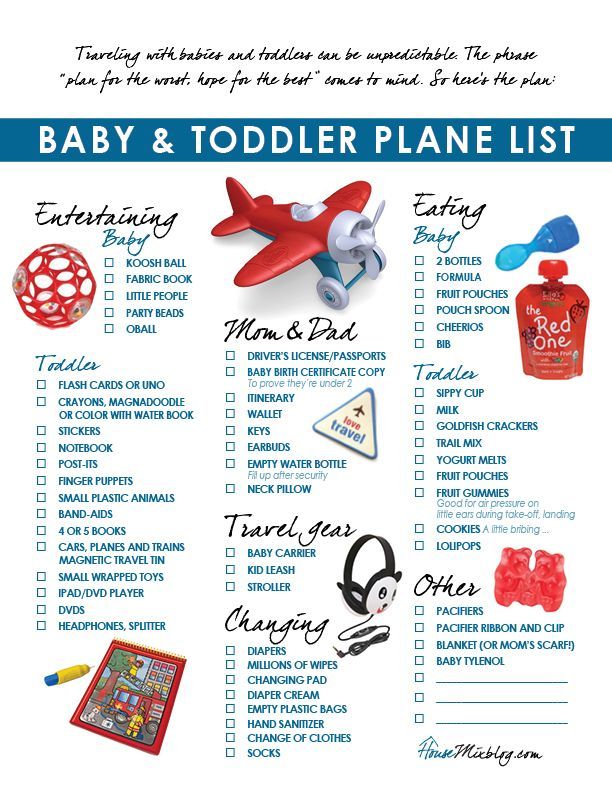
Within 8-10 days after birth, most airlines are ready to accept a small traveler on board. The airline may require a doctor's note to allow the newborn to fly, so find out the requirements in advance. nine0003
Some airlines, such as British Airways, make it possible to book a seat on a flight for unborn children - with the need to clarify all the information after birth.
How to fly with a baby: how to order carrycot
Babies fly without a seat - on their parents' laps. By default, parents are given seat belts with which the child is fixed in the arms of an adult. Needless to say, such belts are not to the taste of children. nine0003
A regular carrier or sling can do a good job. In them, the child can sleep comfortably for the entire flight.
Some airlines offer cribs for babies, which must be booked in advance. Also check if the airline allows you to take your car seat on board the aircraft and check the requirements for it.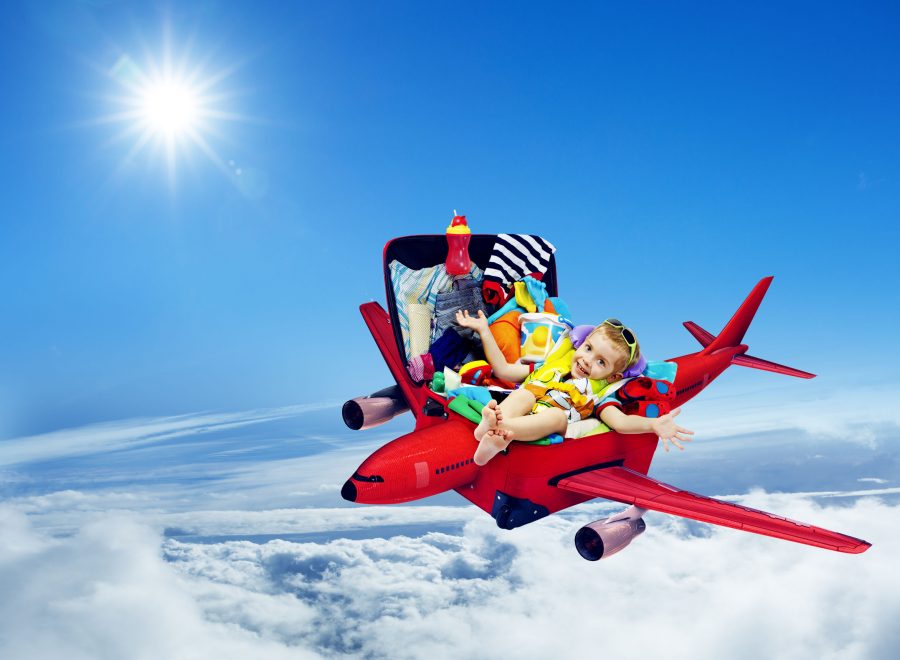
How to fly with a baby: stroller
As a rule, airlines allow you to take a stroller with you, even if the baggage check-in is not provided for by the fare. nine0003
The stroller can be checked in as baggage at check-in or handed over to flight attendants when boarding the plane. In the second case, the stroller will be returned to you immediately after leaving the aircraft at your destination.
The stroller is transported free of charge, but be sure to check if there are requirements for the dimensions and maximum weight of the stroller.
How to fly with a baby: solving the problem of ears
During takeoff and landing, due to pressure changes, small children often cry and complain of ear pain. nine0003
To help your baby avoid discomfort, offer him a breast, a bottle of water or juice. Older children can sip water from a cup or cup or suck on a lollipop.
How to fly with a baby: food on the plane
Even in conditions of limited liquid transportation, parents of babies should not worry.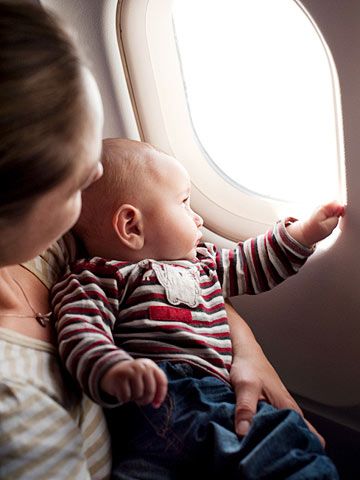 You can take breast milk bottles, formula, water, juice or compote on the plane.
You can take breast milk bottles, formula, water, juice or compote on the plane.
How to send a child alone by plane abroad
If none of the adults can fly with the child on vacation, he can fly alone - under the watchful eye of the airline representatives.
Already from the age of 5, a child can be sent on his first independent trip and at the same time be sure of a successful outcome of the venture. No wonder - after all, the child will be taken through customs, put on a plane, and at the destination they will be handed over to a meeting person. nine0003 Reminders for tourists Acclimatization, or how not to spoil your vacation Types of food in hotels and their differences
On a plane with a child: simple tips for parents
As a rule, the fastest way to get to a place of rest with a child is by plane.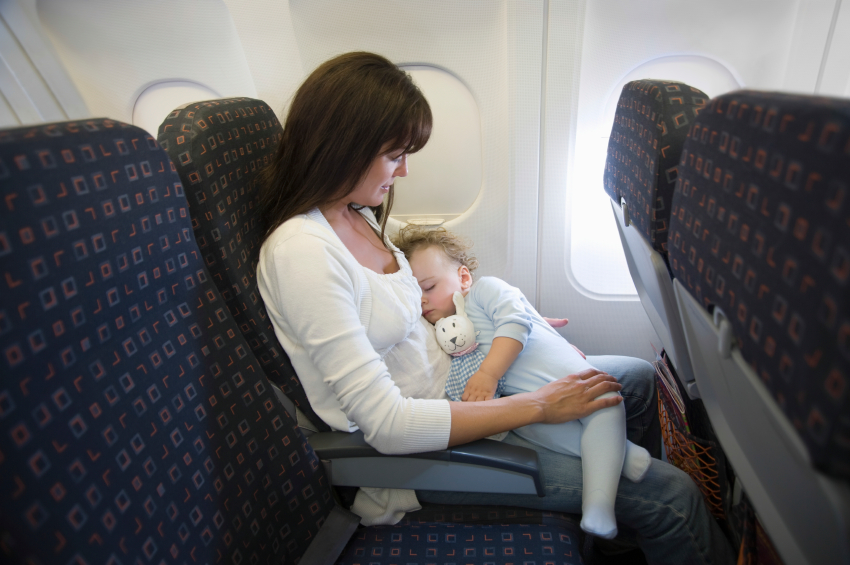 This process, taking into account the check-in of luggage, passing through passport control, waiting, taking off and landing, sitting in one place for a long time, is also tiring for an adult. What can we say about small children - for them, due to their age, physical characteristics and dependence on a clear daily routine, such a trip can be a very difficult test. nine0167
This process, taking into account the check-in of luggage, passing through passport control, waiting, taking off and landing, sitting in one place for a long time, is also tiring for an adult. What can we say about small children - for them, due to their age, physical characteristics and dependence on a clear daily routine, such a trip can be a very difficult test. nine0167
Experienced travelers know a number of simple secrets that will help parents enjoy traveling with a child of any age.
Causes of children's whims
One of the main causes of children's crying and nervousness on the road is the severe discomfort that babies suffer during takeoff and landing. The fact is that in young children the vestibular apparatus is still not sufficiently formed - up to 5 years, the passage connecting the nasal cavity with the ear, scientifically speaking, the Eustachian tube, is not yet physiologically developed. Therefore, children in flight do not just lay their ears, they really hurt.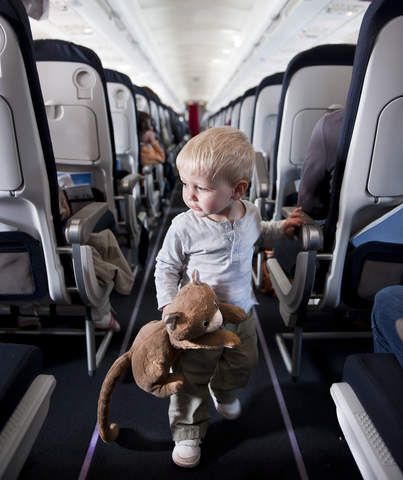 Remember that it is especially unpleasant for both children and adults when traveling by air if they set off on the road with a runny nose. Such passengers are advised to thoroughly clean their sinuses before takeoff and landing, to carry a cold remedy to avoid the risk of otitis media later. nine0016
Remember that it is especially unpleasant for both children and adults when traveling by air if they set off on the road with a runny nose. Such passengers are advised to thoroughly clean their sinuses before takeoff and landing, to carry a cold remedy to avoid the risk of otitis media later. nine0016
Another serious reason for the whims of the child is the day regimen disturbed due to the flight, when the usual hours of eating, daytime and nighttime sleep are interrupted. This is especially noticeable during late departures: the baby should already be asleep, but forced to stay awake. In this case, sedatives can be used to help the child fall asleep in an unusual environment, of course, you must first consult with a pediatrician.
How to make traveling easier for your child
You can help a small passenger endure unpleasant moments during a flight, for example, by dropping a vasoconstrictor drug suitable for age into his nose before takeoff and landing - there will be less ears to lay.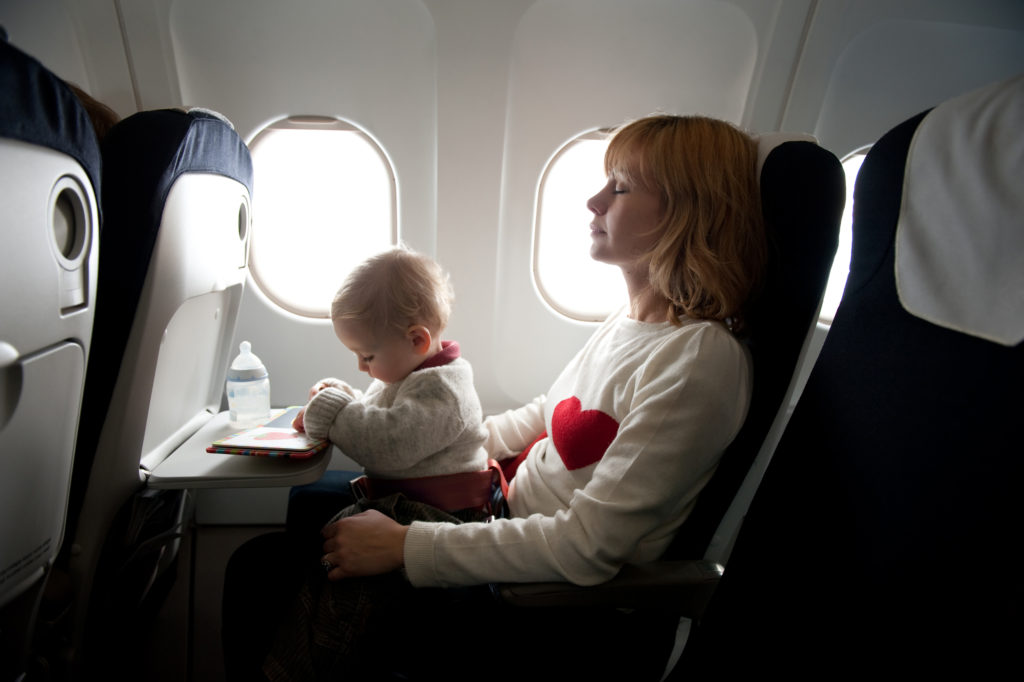 Do not forget to get information about drops suitable for this from a pediatrician in advance.
Do not forget to get information about drops suitable for this from a pediatrician in advance.
You can also use "folk" methods. One of the time-tested techniques is to teach a child how to properly blow his nose and make swallowing movements in the form of an entertaining game to get rid of stuffy ears. Both infants and those who are older are encouraged to drink water or juice in small sips. Also, an older child can be offered a lollipop or candy, or during takeoff and landing, quietly imitate buzzing sounds with him in order to master the technique of proper breathing during pressure drops. nine0003
If the baby learns to breathe properly during takeoff and landing, this will help both from stuffy ears and from nausea. By the way, experts recommend not to overfeed the child before the road, then he will be less sick. Grab something sour with you - apples, hard candies or gummies, sour also helps to cope with nausea.
Two proven means also help to avoid children's whims on the plane: firstly, parents are advised to remain patient and calm and remember that children take an example from adults, "catch" their mood, so they easily copy adult nervousness. Secondly, you need to be able to divert the attention of the child, switch it to something positive and interesting. We advise you to take your baby’s favorite toy with you (just make sure that it doesn’t turn out to be an annoying “beep”, the neighbors won’t thank you for it), stock up on a flight with a device for watching cartoons, a book, games. A number of airlines prudently give their young passengers special kits for creativity before take-off, where there is a felt-tip pen, paper for drawing or coloring. nine0003
Secondly, you need to be able to divert the attention of the child, switch it to something positive and interesting. We advise you to take your baby’s favorite toy with you (just make sure that it doesn’t turn out to be an annoying “beep”, the neighbors won’t thank you for it), stock up on a flight with a device for watching cartoons, a book, games. A number of airlines prudently give their young passengers special kits for creativity before take-off, where there is a felt-tip pen, paper for drawing or coloring. nine0003
As for children's "equipment", of course, it is worth stocking up on wipes - wet and dry, for babies, grab a few diapers and diapers. An adult traveling with a child will not hurt to take a change of T-shirt on the plane just in case.
Airline information: tickets for children, check-in and luggage
A small passenger, regardless of age, is entitled to an air ticket. In this case, two age categories of children are distinguished: up to 2 years old - infant (INF code) and from 2 to 12 years old - child (CHD code).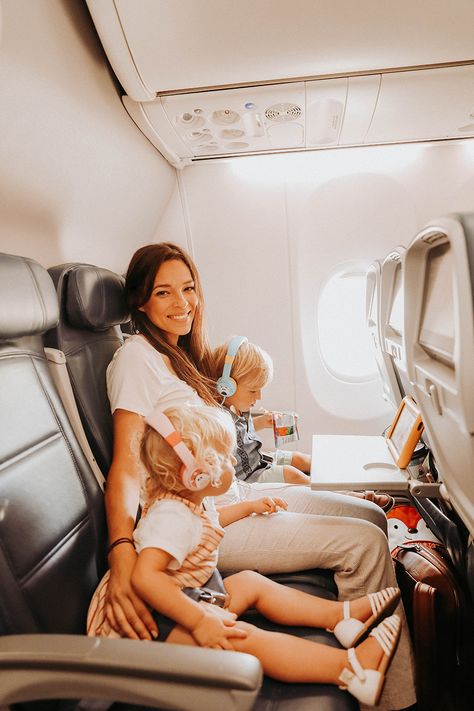 Depending on these categories, parents receive discounts on the full price of the ticket. Usually for an infant, the discount is 90% without providing a separate seat. For a child who is between 2 and 12 years old, the ticket is usually issued with a 50% discount on the full fare.
Depending on these categories, parents receive discounts on the full price of the ticket. Usually for an infant, the discount is 90% without providing a separate seat. For a child who is between 2 and 12 years old, the ticket is usually issued with a 50% discount on the full fare.
Travelers with children are advised to arrive early for registration in order to have time to reserve the most convenient seats. If your child is very young, you will need a special carrycot for the flight. You can order it in advance from the airline or ask the flight attendants already on the plane.
Keep in mind: when taking off and landing, as well as when entering the turbulence zone, the child must be held in your arms. As a rule, the cradle is designed for children weighing from 8 to 12 kg, check this information with the airline before the flight. nine0003
Baby food can be taken into the cabin without restrictions: it is not subject to the rule regarding the amount of liquids carried on board.